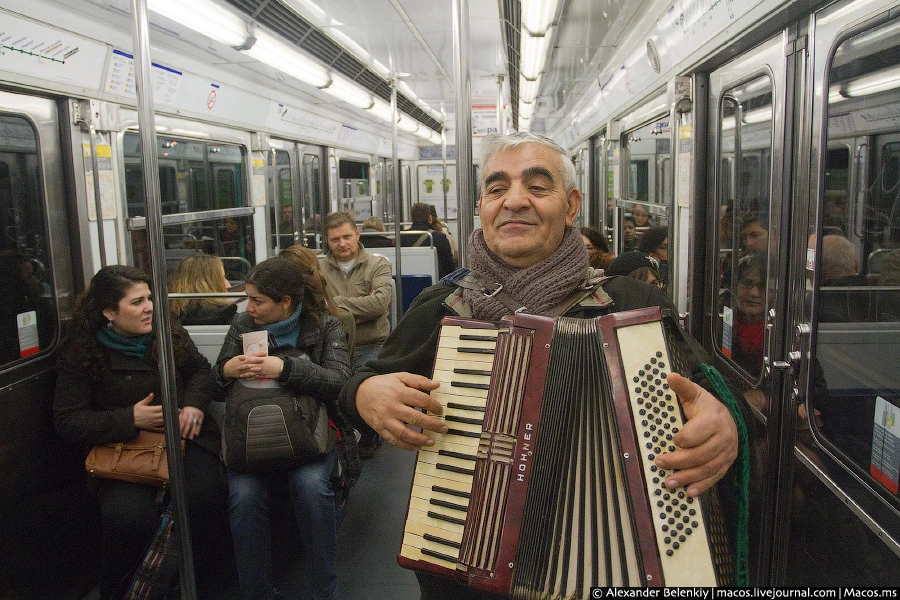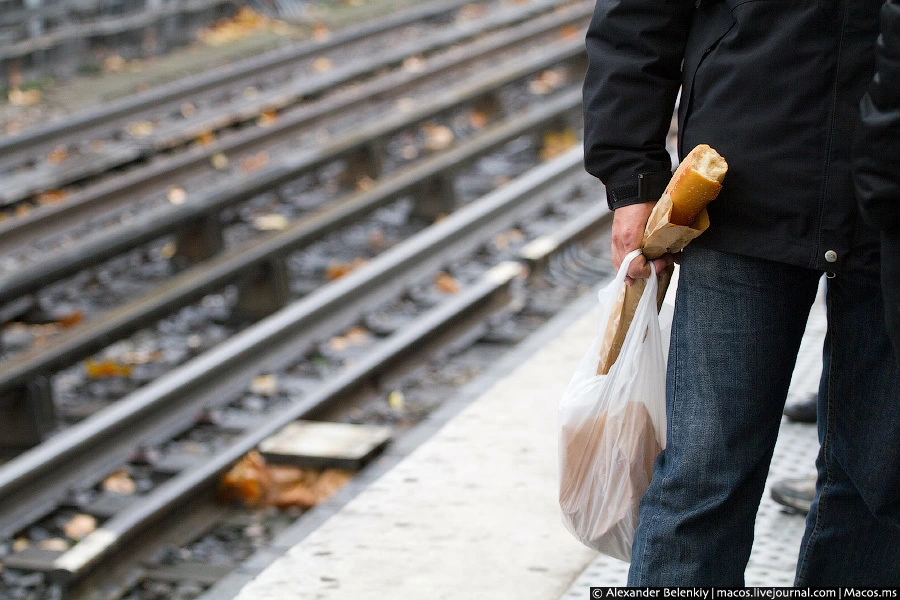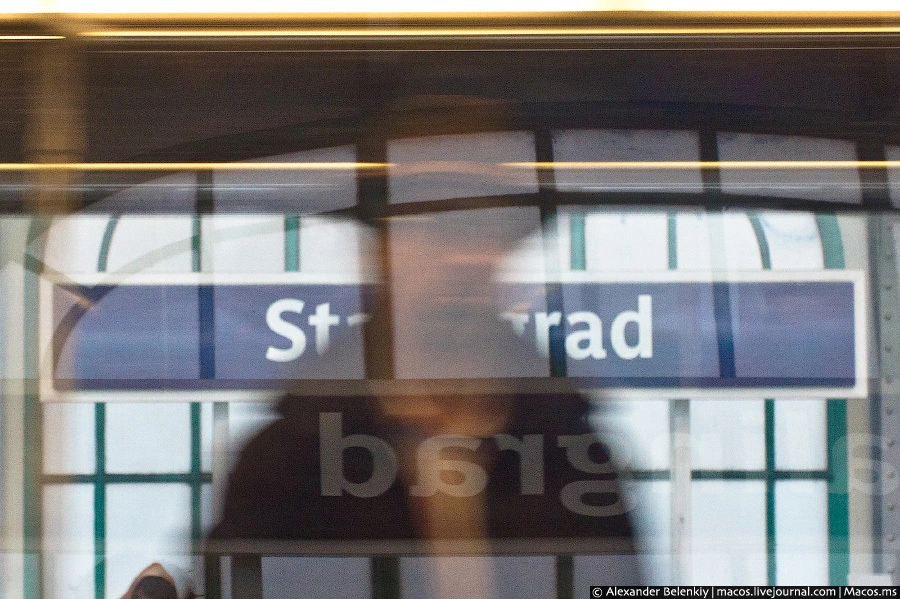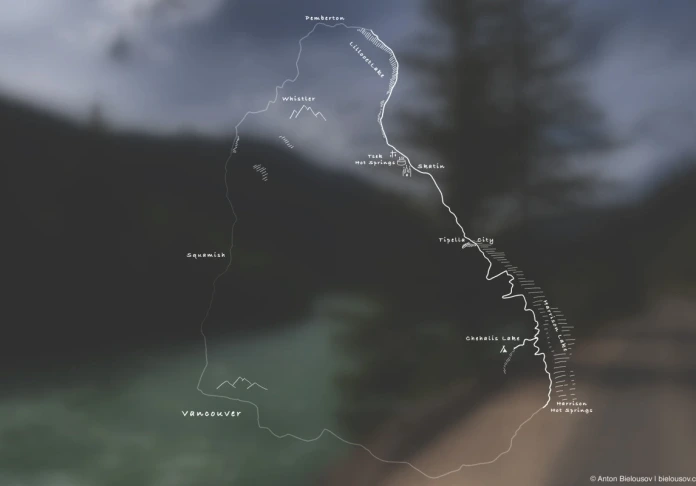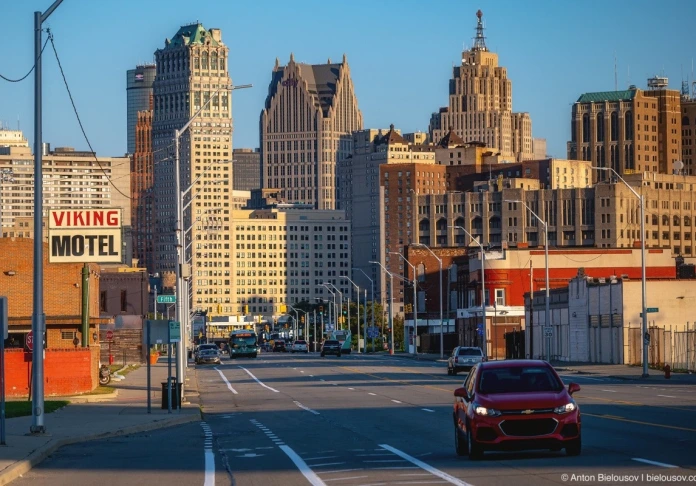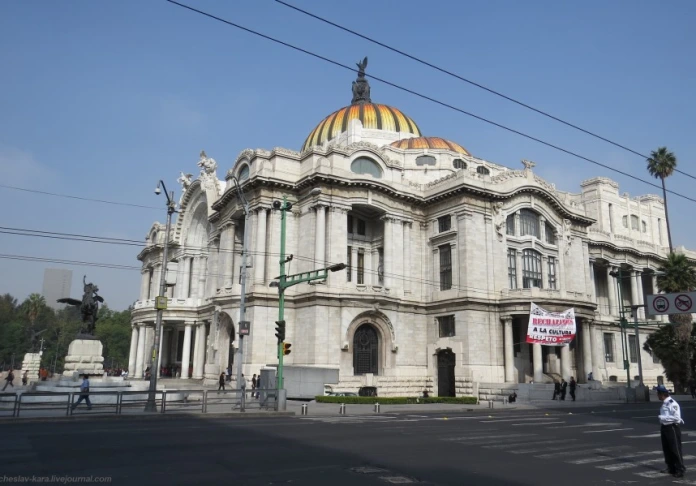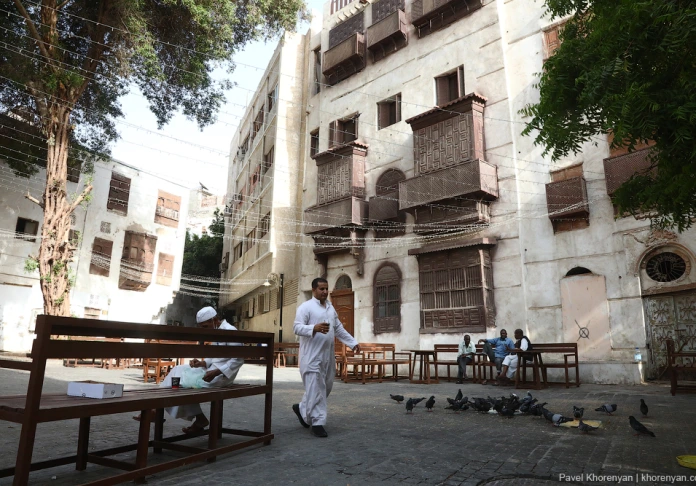The Paris Metro
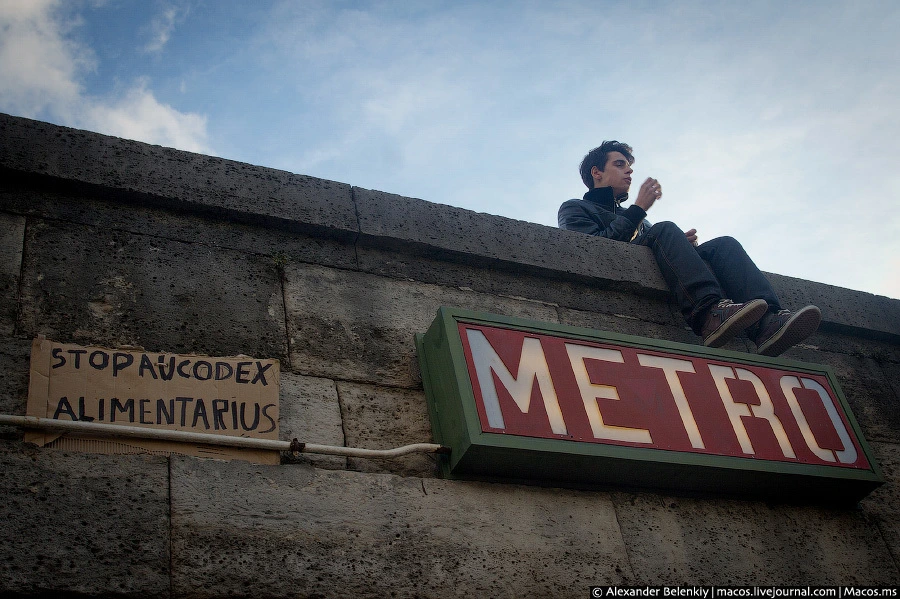
Metro in Paris - more than just transport. For more than a hundred years of his work, he became one of the main attractions of the French capital. Scheme lines entangled web of strange city. It seems that it is impossible to understand, but after a few trips you already easily guided in the subway. Two days later I was rolling on the Paris subway to do for you interesting report. Now, belatedly, I publish it. Do not pass :) Compare Moscow and Paris metro is impossible. They are too different, as if they were built not like each other civilization (although sometimes it seems the way it is). But still there and there is a kind of underground transport. In Paris - and even ground, "light rail" in Moscow, and has not received a mass development, but to experiment and not be called.
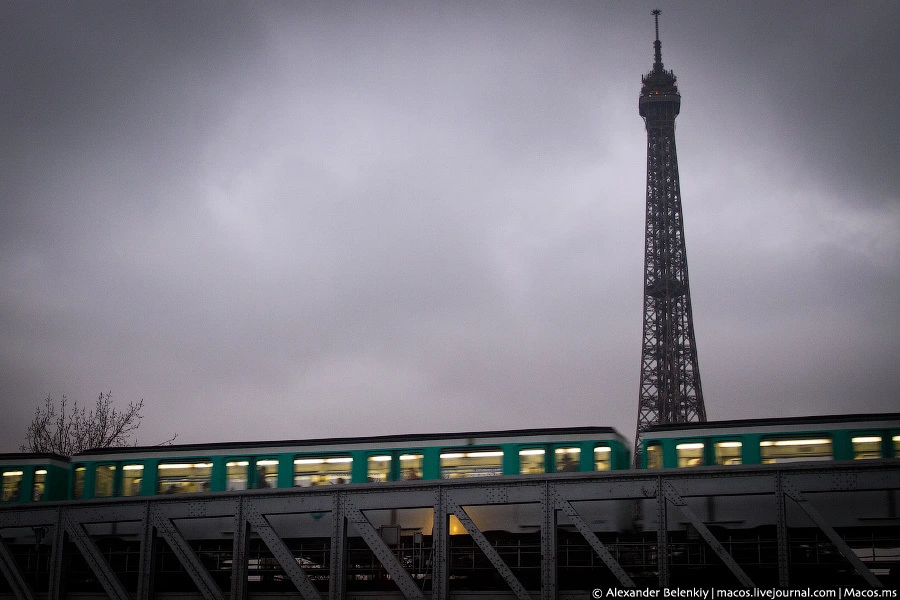
Let's talk about numbers. Metro in Paris came to the World's Fair in 1900. Over one hundred and twelve years has grown up to 16 subway lines, now they placed 301 station. There are train connections, it also goes under the ground and reported to the metro, but that's another story.
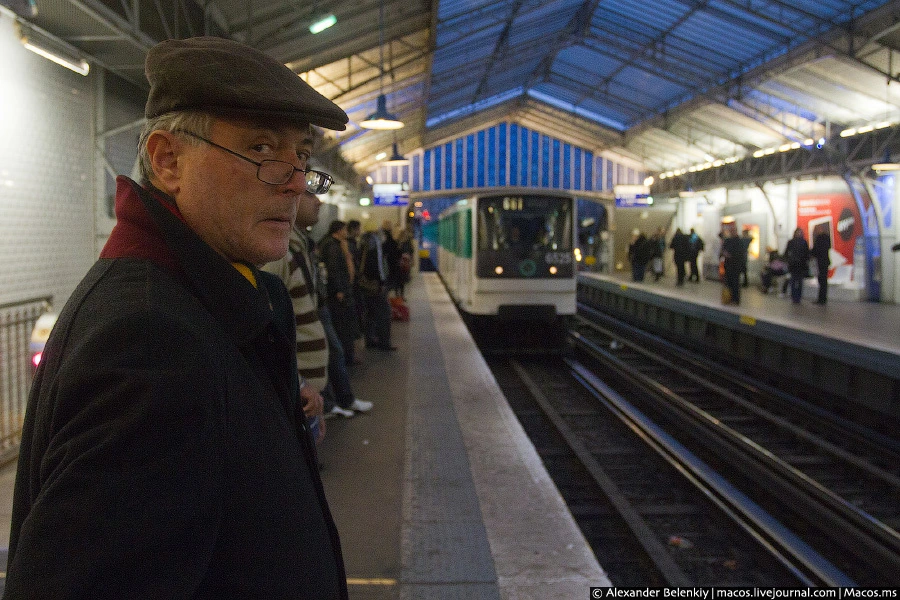
Although the subway, and train, and even the bus - they are all included in a single system of urban transport, the company caters to their RATP. The ticket is the same and act on all modes of transport, the main thing - within the city.
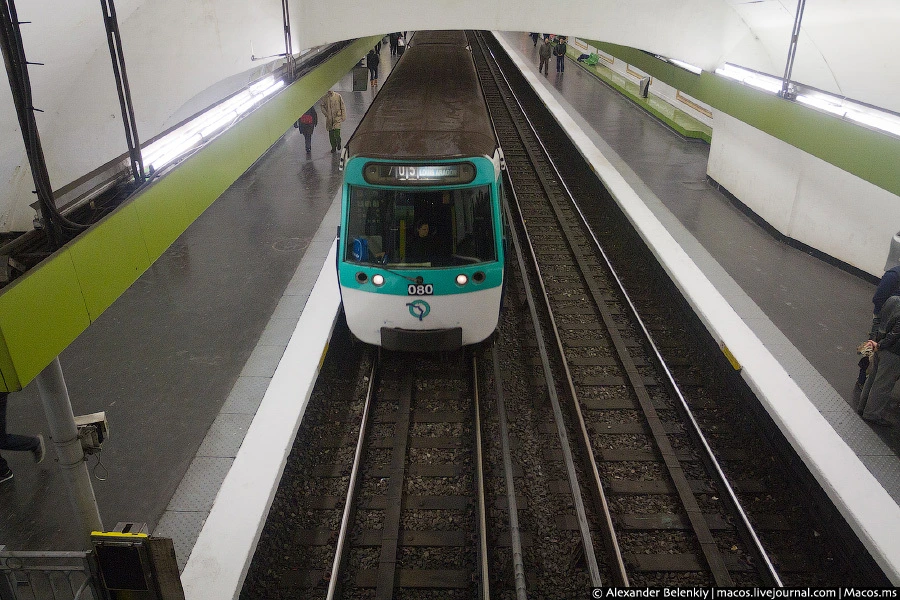
There are four types of walks compositions. This - the oldest, the end of the 50s. They run a lot more. There are lines, battery is equipped with only such trains.
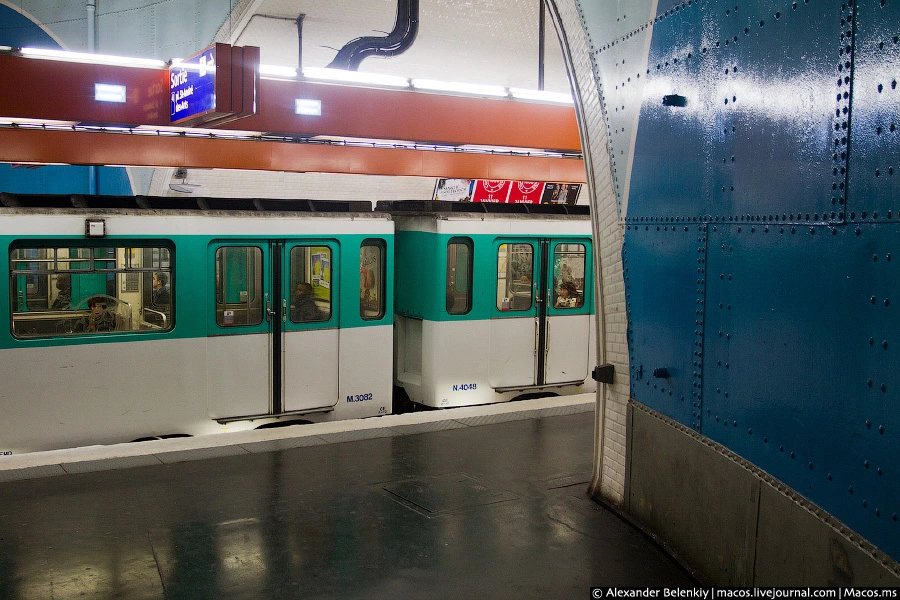
These cars have an interesting modification - on rubber wheels. Train wheels on such a quiet, besides, tires provide faster acceleration and braking: it is very important for the Paris subway, where stations are located very close to each other.
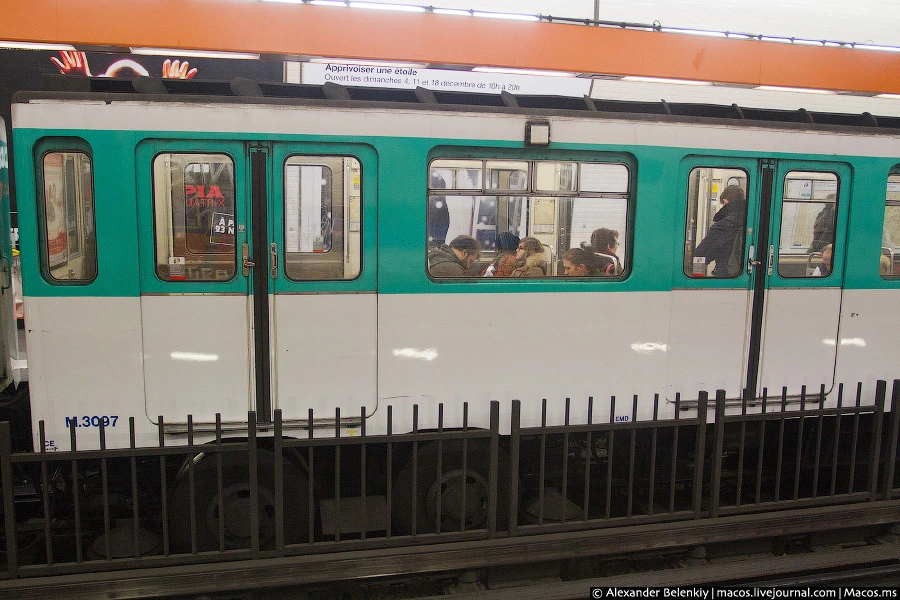
An old cars look much like ours, Moscow. They are just inside, and the doors need to be opened manually.
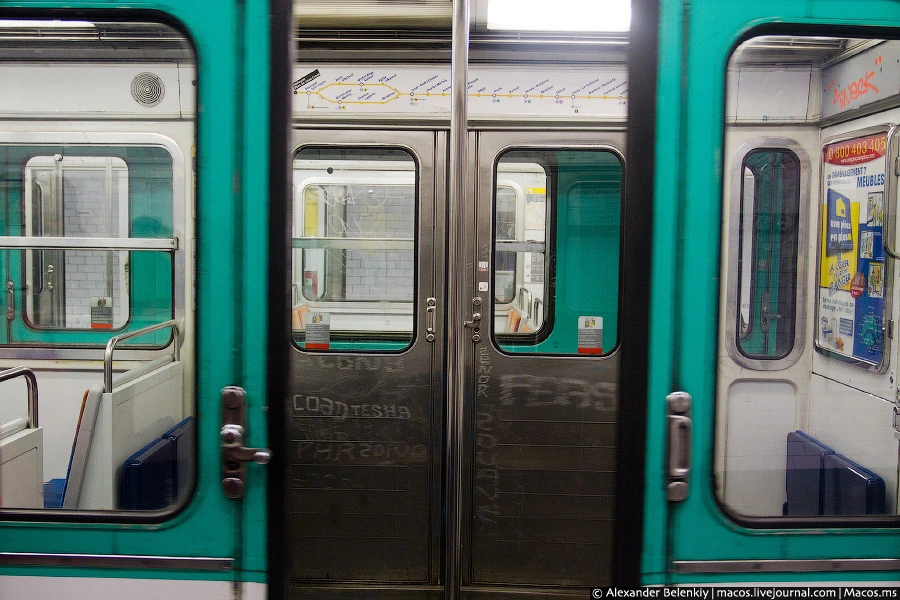
Yes, by hand. Of course, automatic doors and close themselves. A manual opening is made in order to evenly distribute the passengers inside the car.
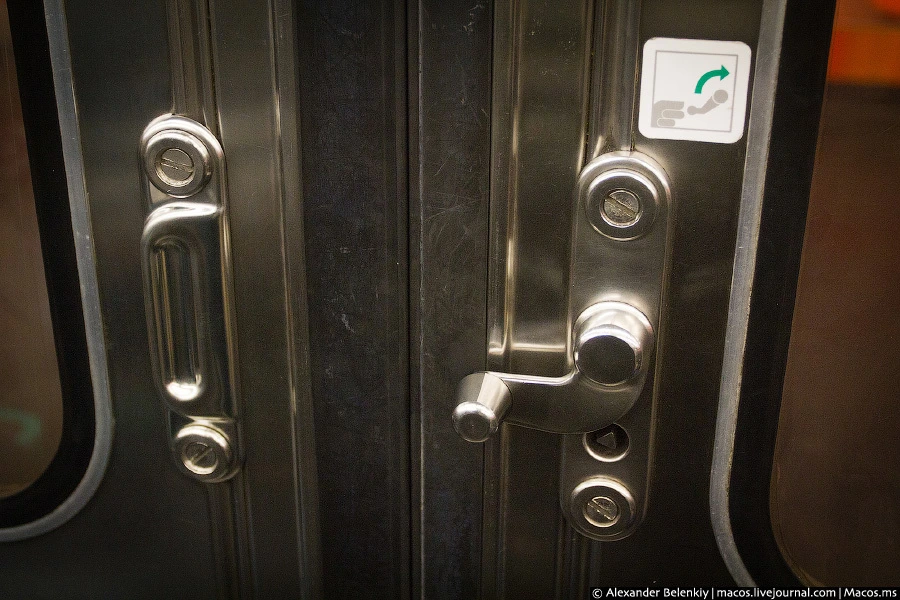
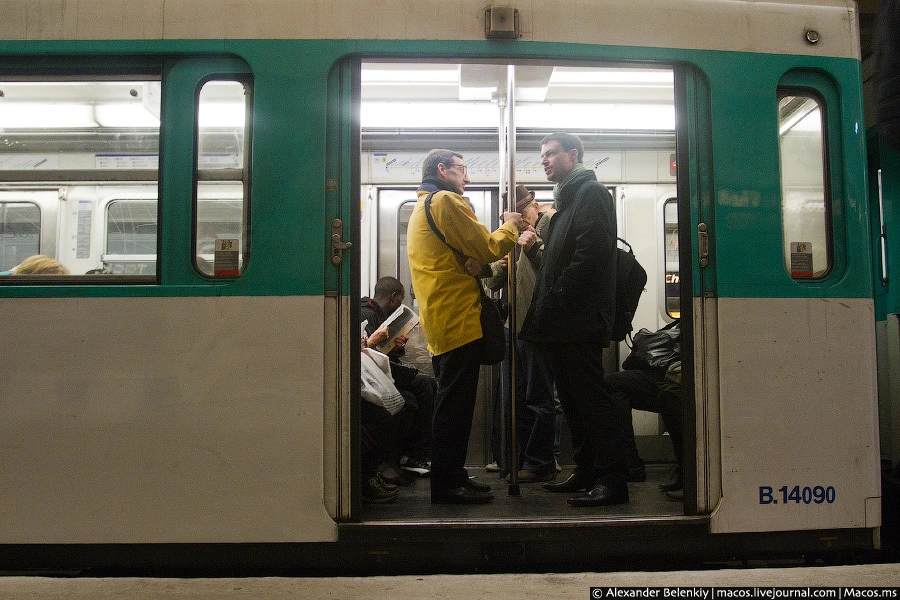
On two lines for trains without drivers.
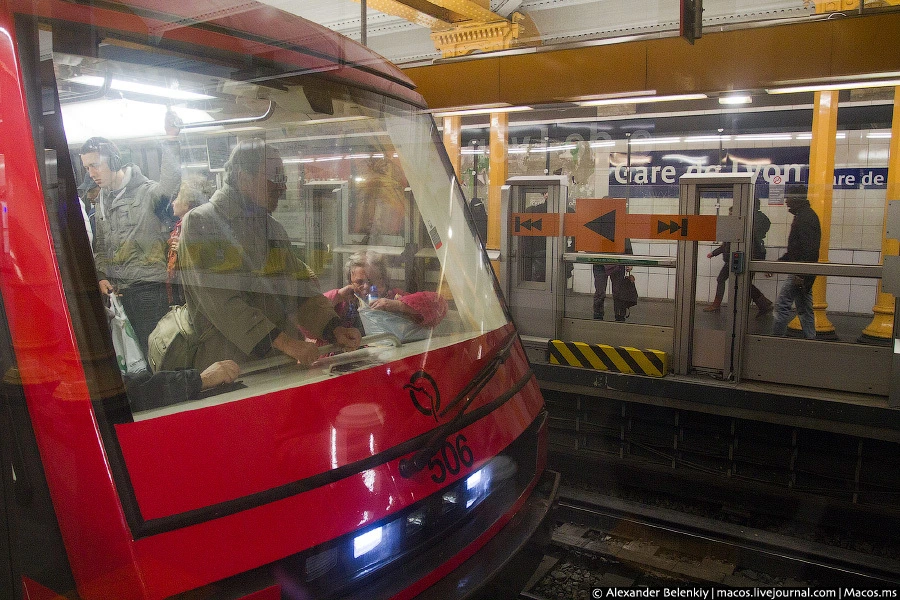
At the stations of these lines, a second door. Almost as in the St. Petersburg metro, only transparent and of small structures. Assigning all the same, so that people do not fall on the rails.
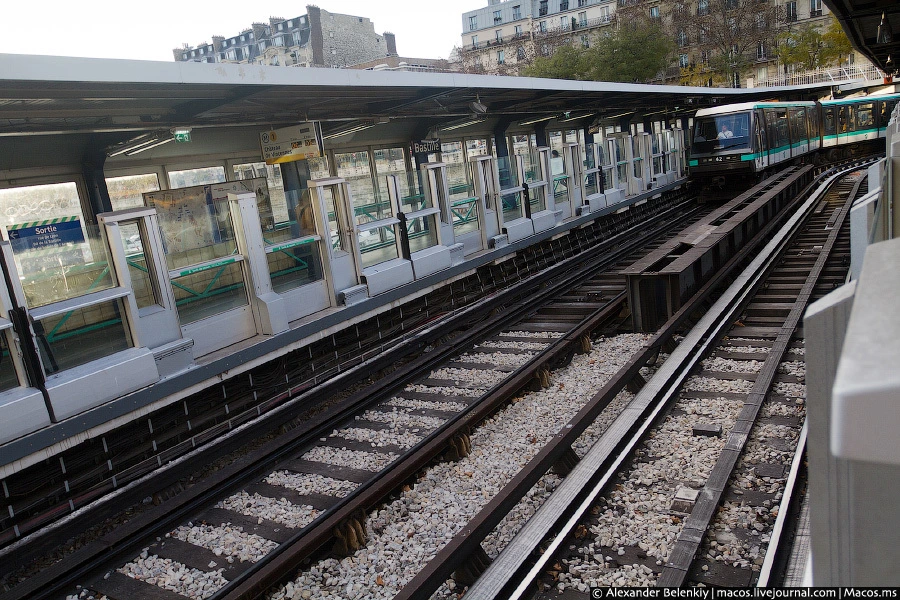
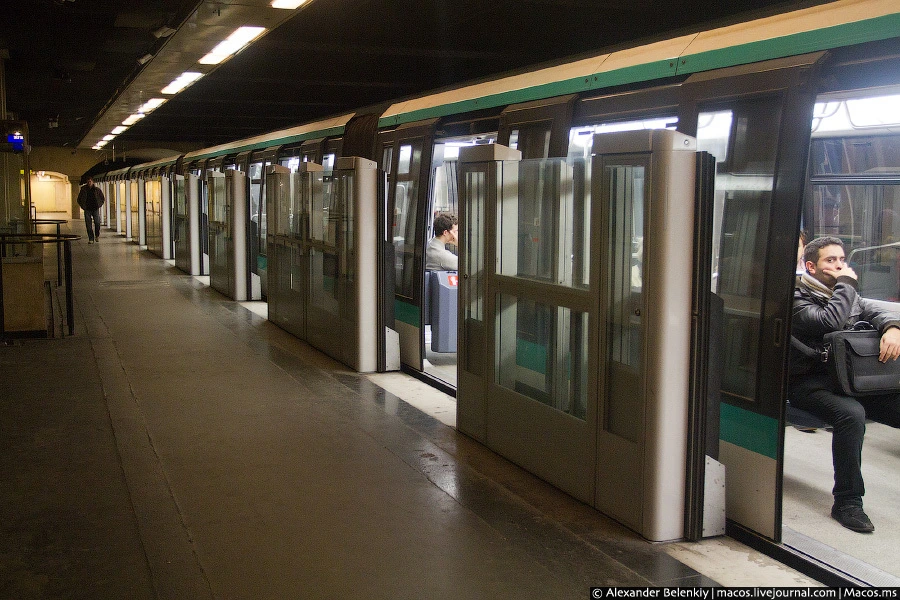
Another type of car, it's the eighties-nineties.
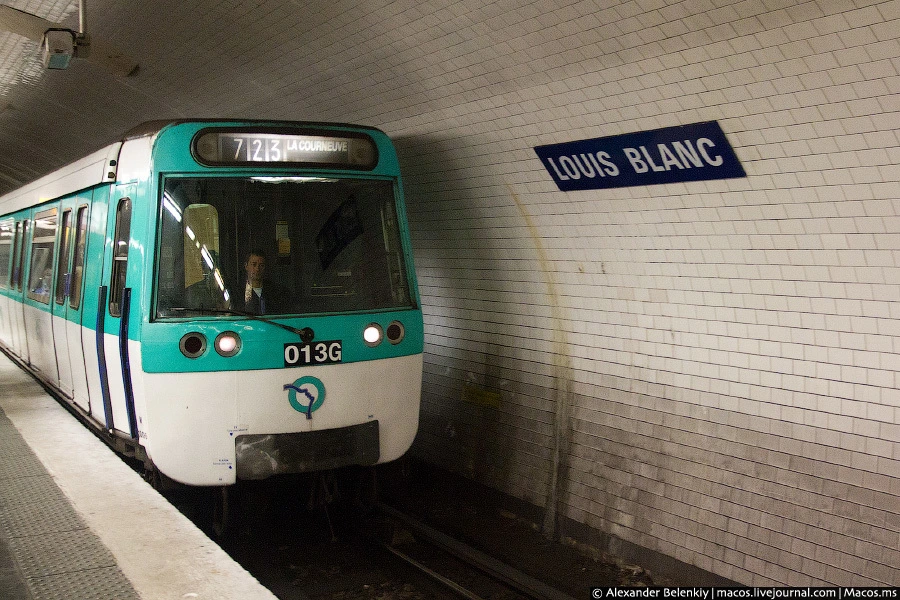
Here, too, the door opened "on demand", but with the button.
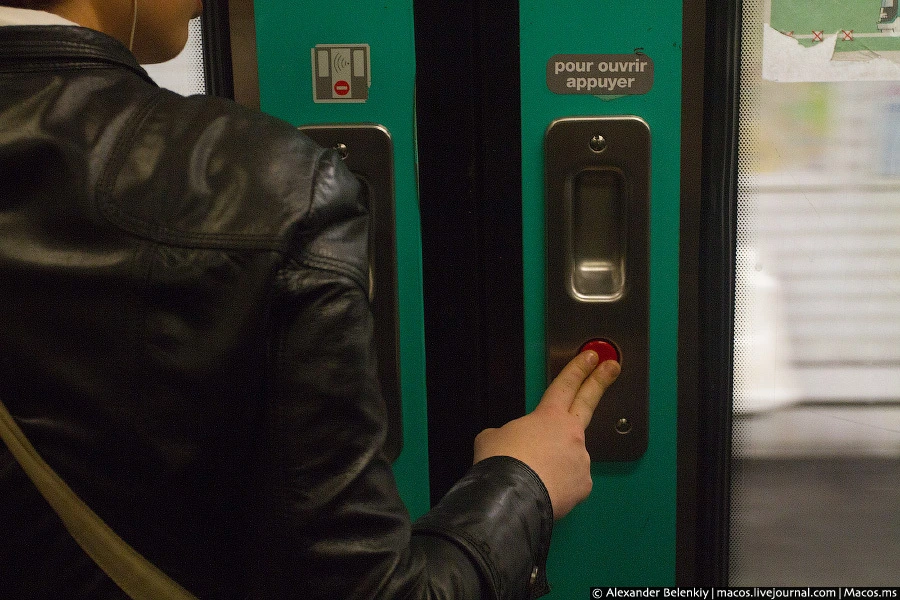
These are the new compositions. The doors open and close a machinist, without any buttons, and through the entire structure can be passed through.
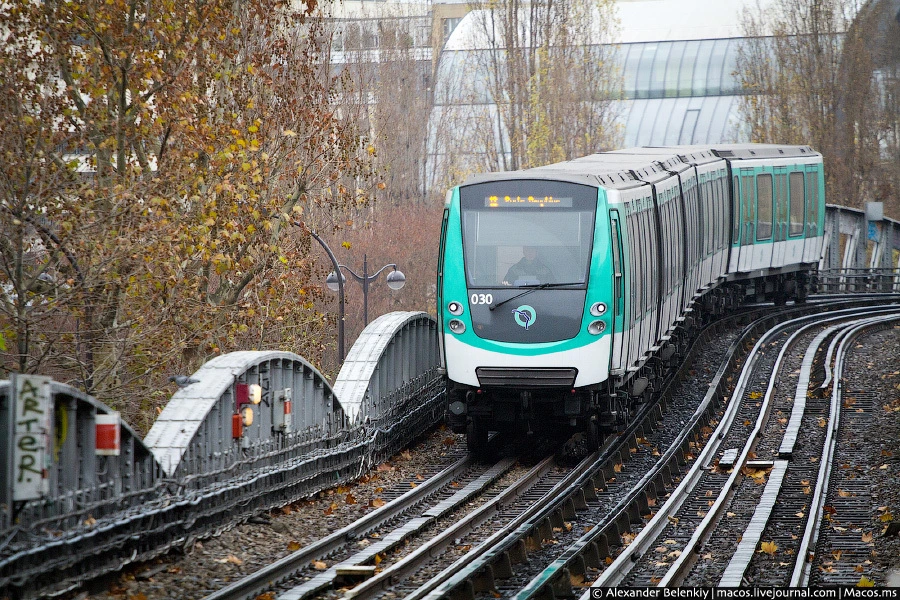
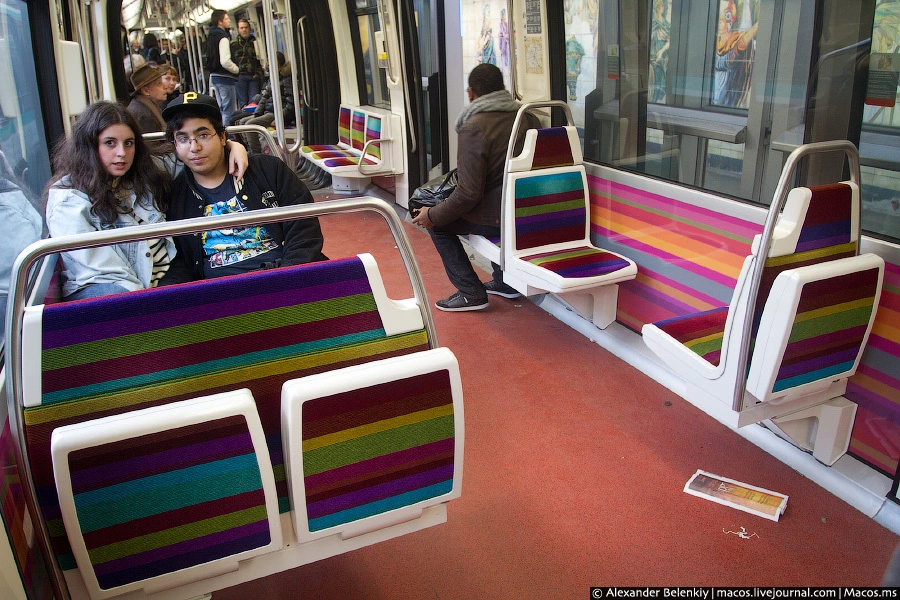
Now I know who stole the idea of such a placard in the new Moscow metrovagonah :)
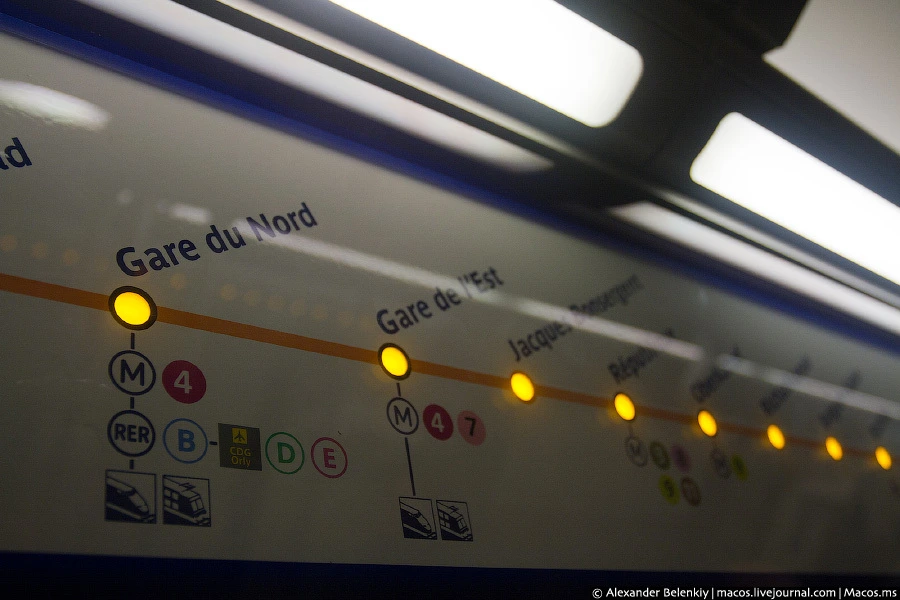

Inside the old car. Folding seats at the door - handy thing.
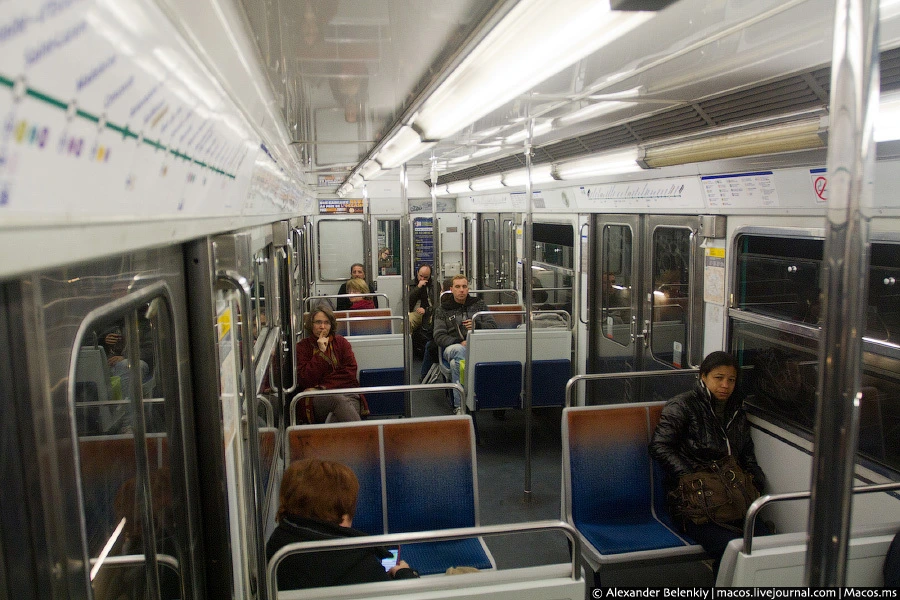
Ticket vending machines are not new, but familiar thing. Our usual offices there, although at each station is sure to be a window of information, where sits a man who can explain how to get to a particular station. In extreme cases, it may also sell the ticket. But the machine is very easy to use.
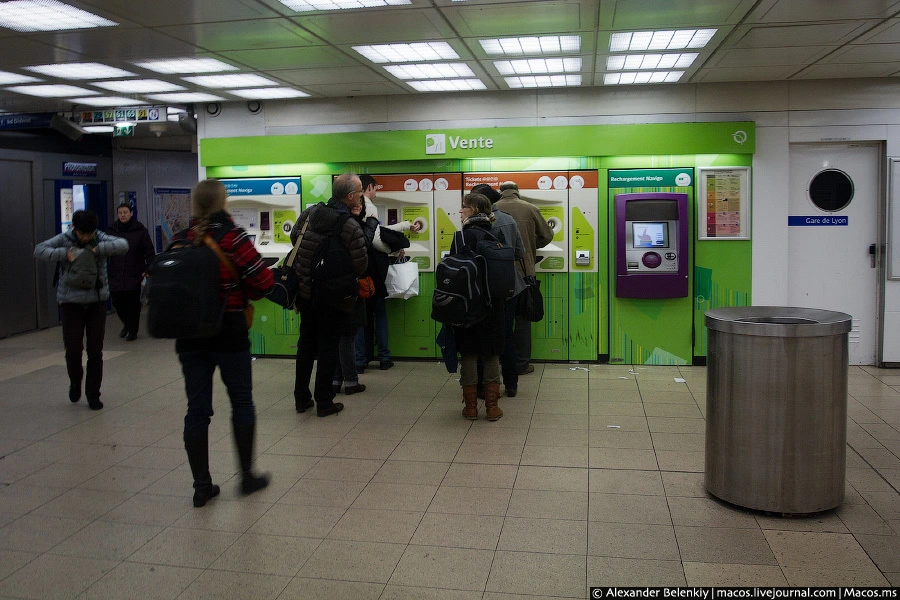
Ticket vending machines "talk" in several languages, some even in Russian. You can buy one ticket can be so-called "carnet" for ten trips (at a substantial discount), you can charge your personal magnetic card. Ticket for a single trip costs 1.7 euros and ten - 12 You can pay with coins or cards. There are machines that accept only credit cards. Interestingly, if you buy a "carnet", you do not give a ticket to ride ten, and ten one-off coupons.
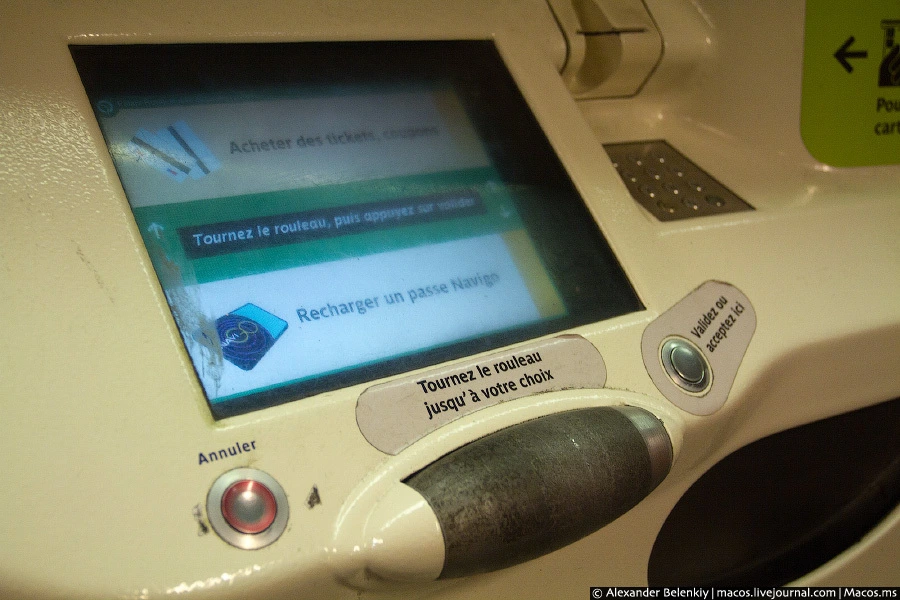
Turnstiles are specially made so high, so that through them it was impossible to jump. Insert the card into the slot and make sure to move forward.
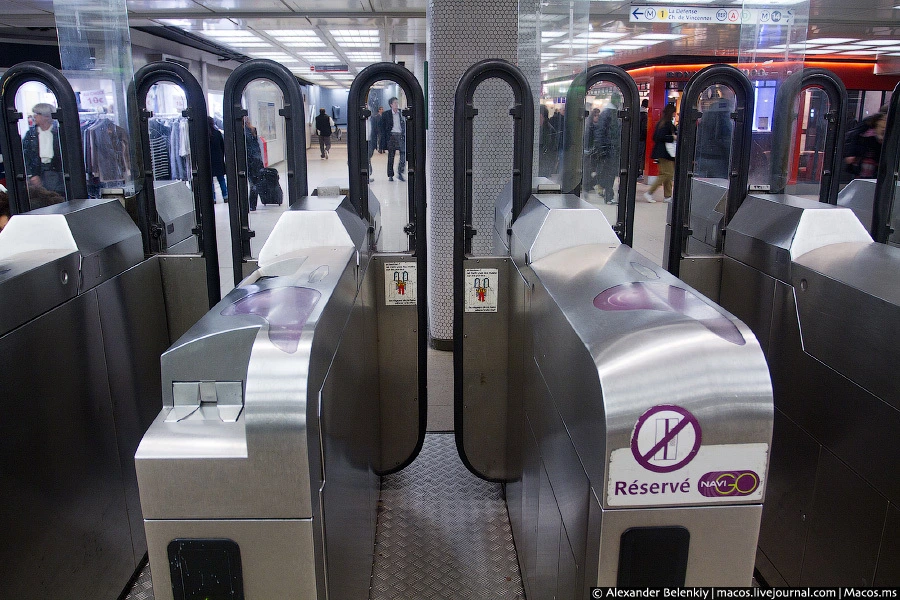
Picks up towards the end of the ticket turnstile doors open and close immediately. Another system of free riders.
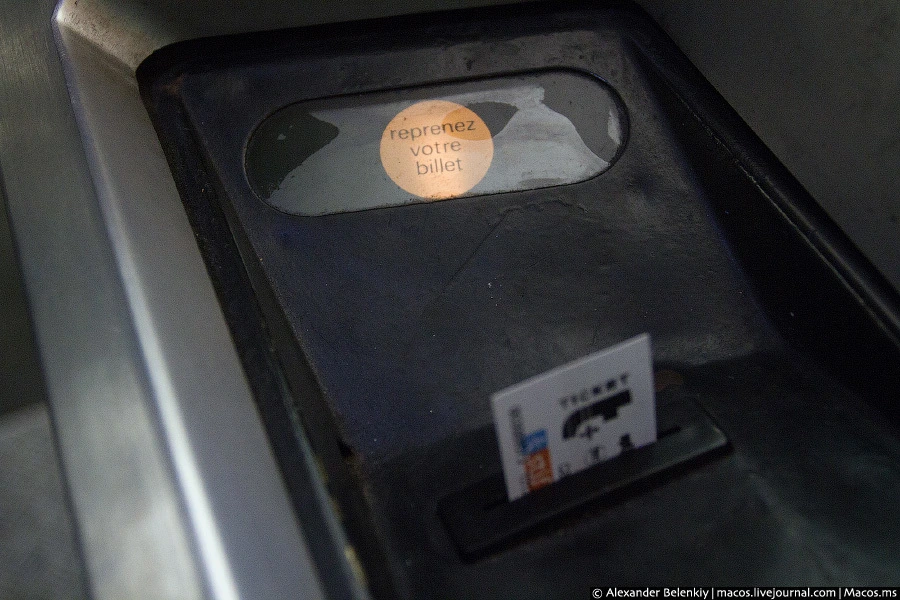
In general, the "hares" - is booming Parisian underground. At the time, negros from the outskirts of the order zadolbali transport workers had to take drastic measures. Therefore, the output also turnstiles, has a greater height.
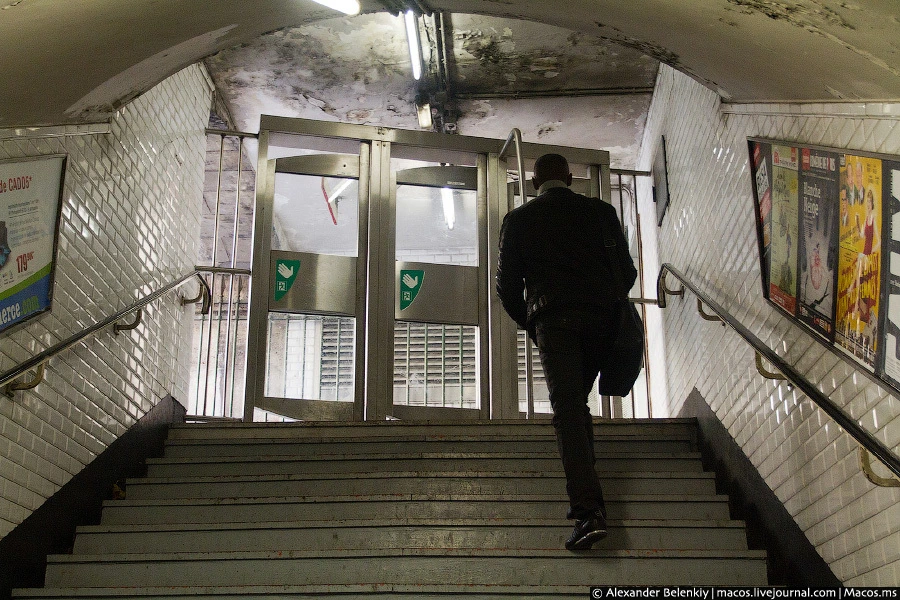
Sometimes the exit turnstiles at all look like this intimidating.
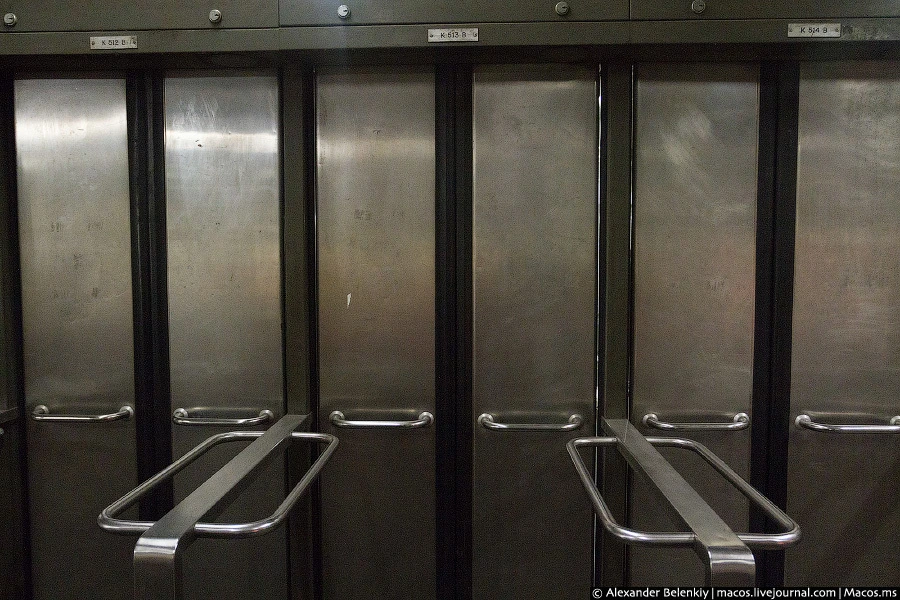
Now for the stations. Though they are many, but they do not shine diversity. It looks like a typical Parisian station. Two of the platform, which are on different sides of roads. Poluarochnye walls, benches along the apron. Minimum of architectural delights.
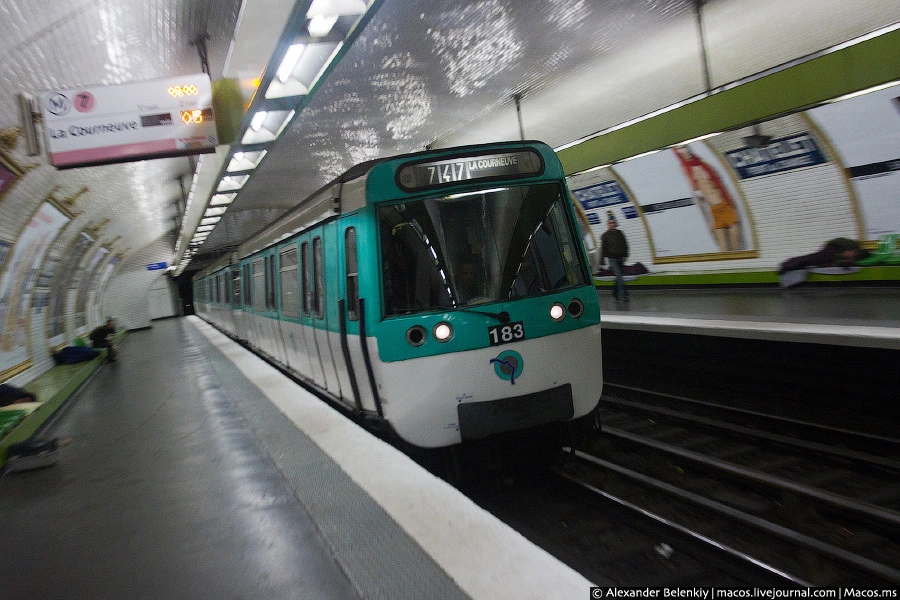
At the same time much more convenient station in Moscow. Everywhere benches or chairs. The names are visible from afar (still, otherwise everything would come confused and do not go there).
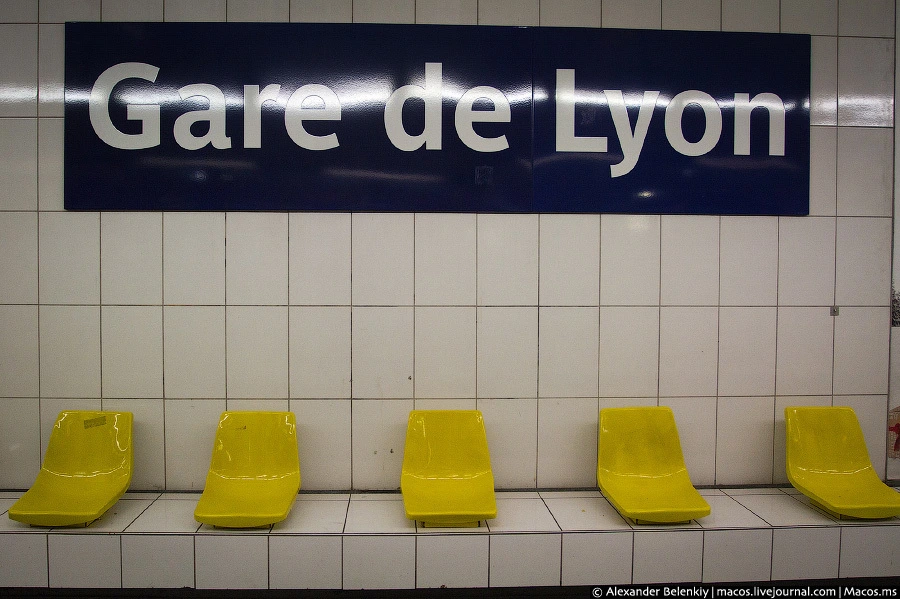
Always clear which way to go, where the elevator where the ticket office, where transfer to another line or to the city train RER. At each station there is a general scheme and subway map with surrounding streets.
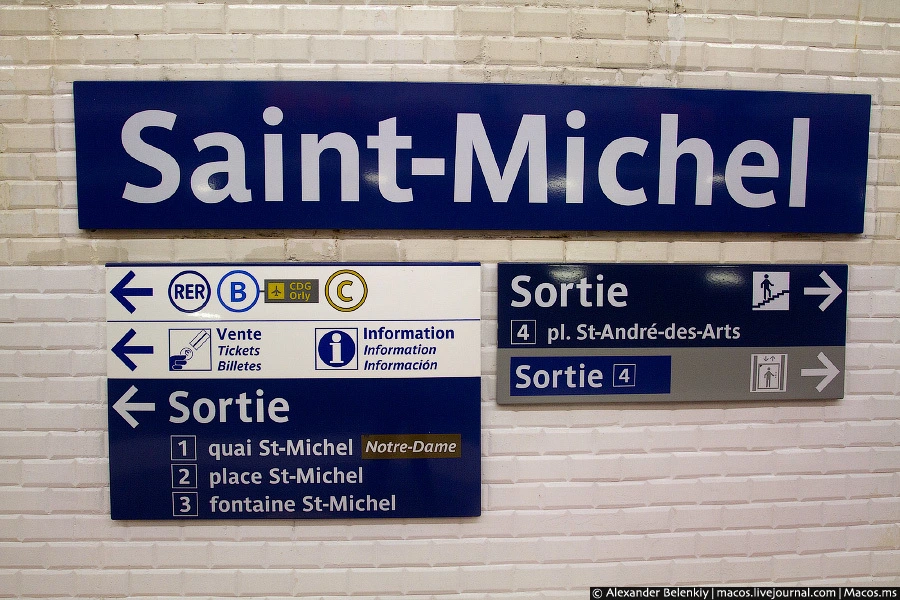
Everywhere placards with the timer. One can see not only come when the next train, and the next after that. And that's why in Moscow to watch that show how long gone train? This will give passengers?
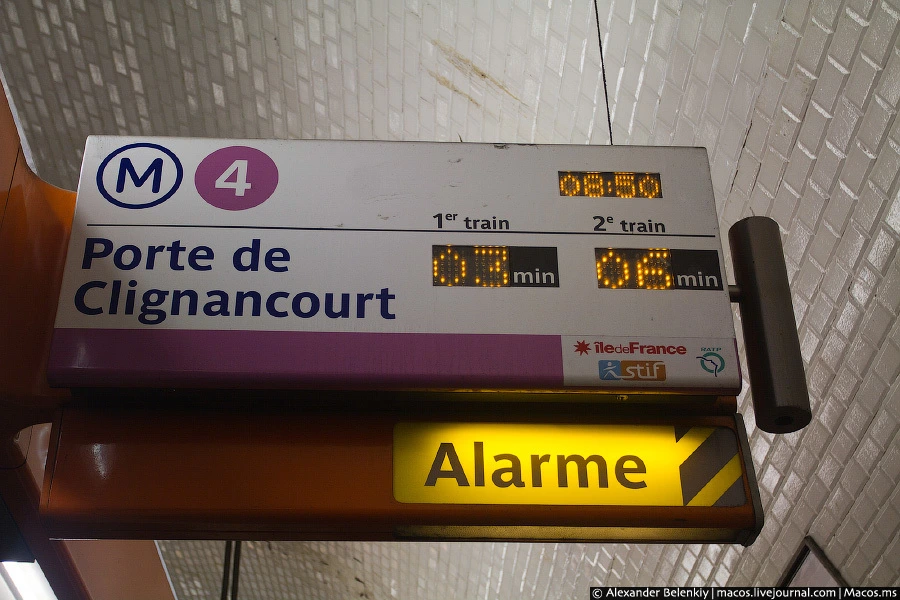
There is a minus: move from one side to the other platform is not so easy. In some places there are stairs at the end of the station, but not everywhere. For example, you boarded the train and found that went in the opposite direction. Or just passed the station. Often have to go out and come again, buying a new ticket.
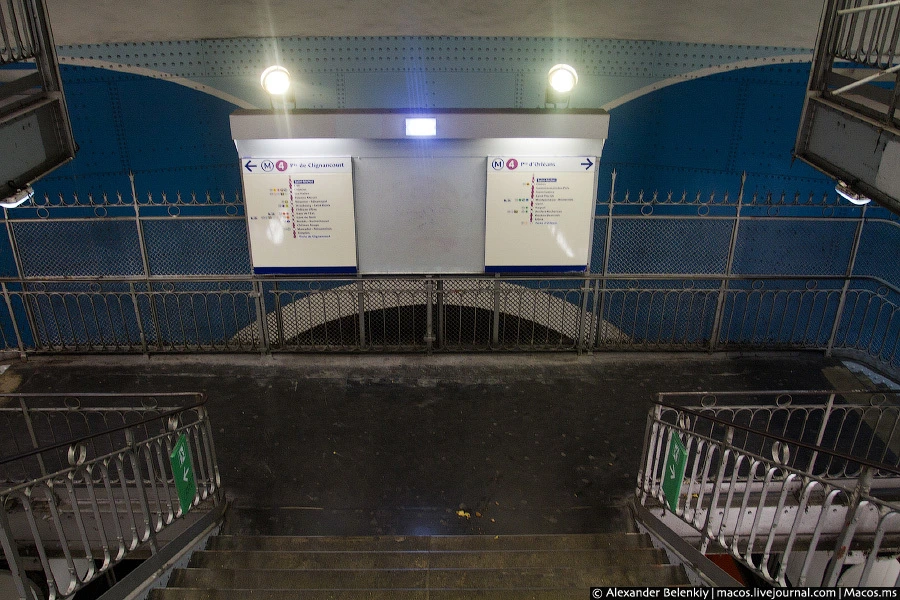
But this is offset by the ability to buy a drink or a meal on kazhloy station.
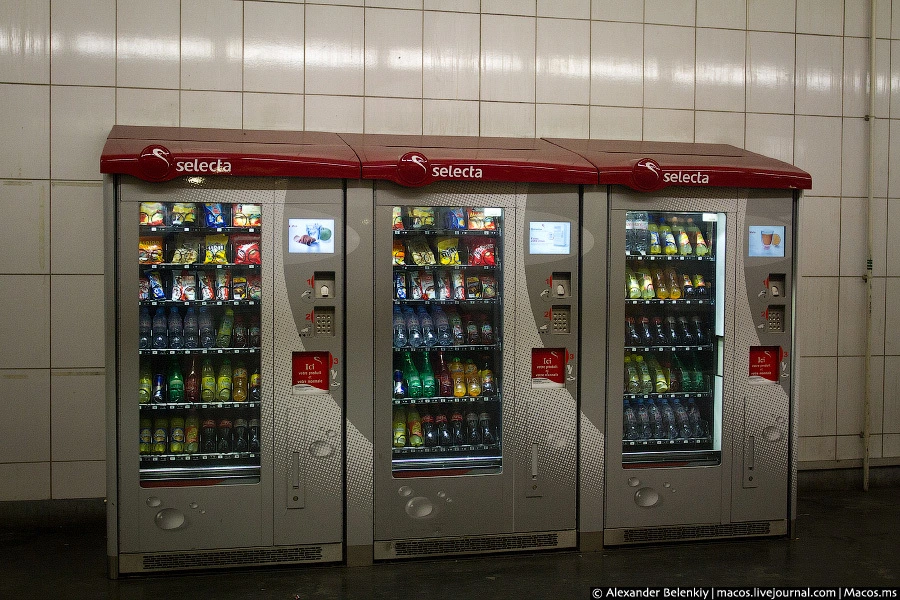
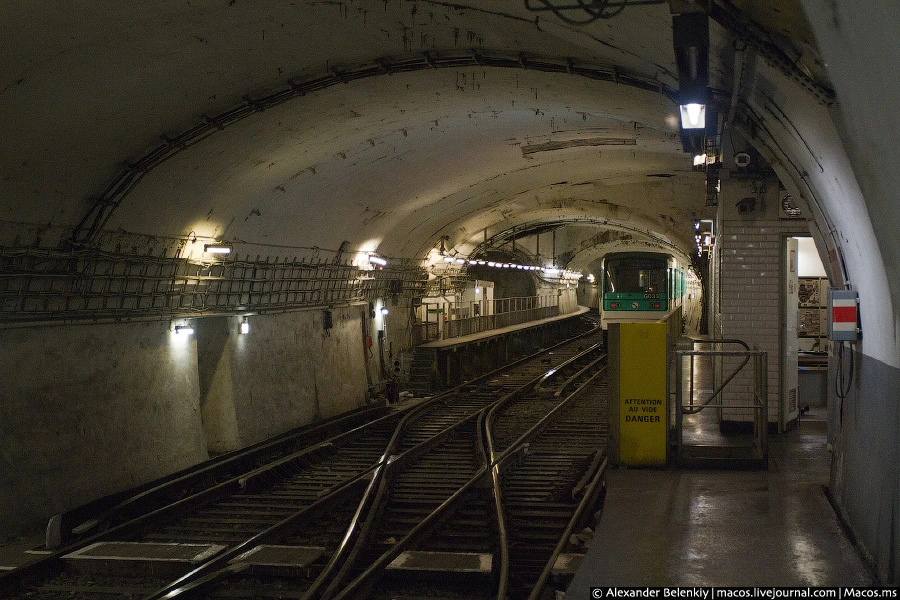
Beautiful and unusual plant, too, are in large part on the first, the oldest metro line. Tuileries station.
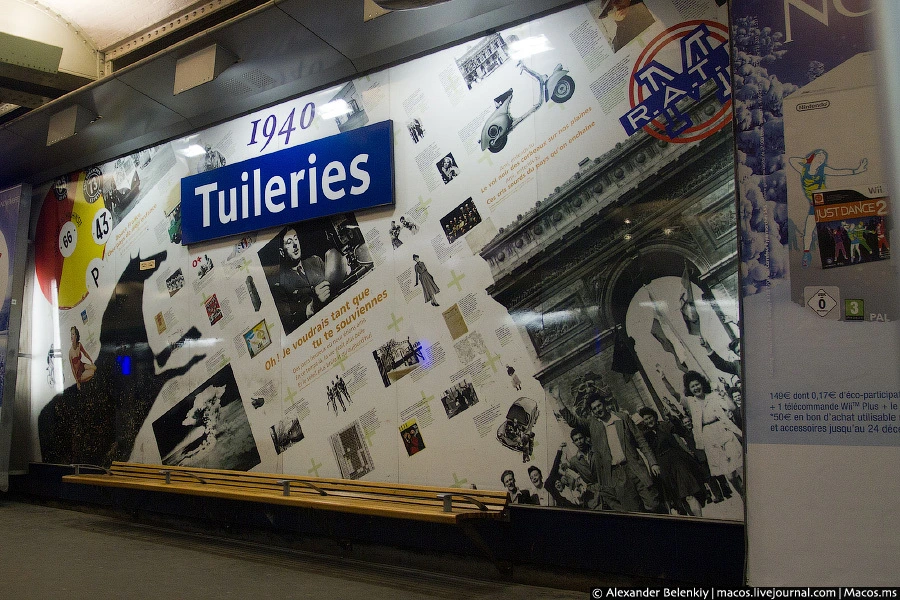
Bastille station.
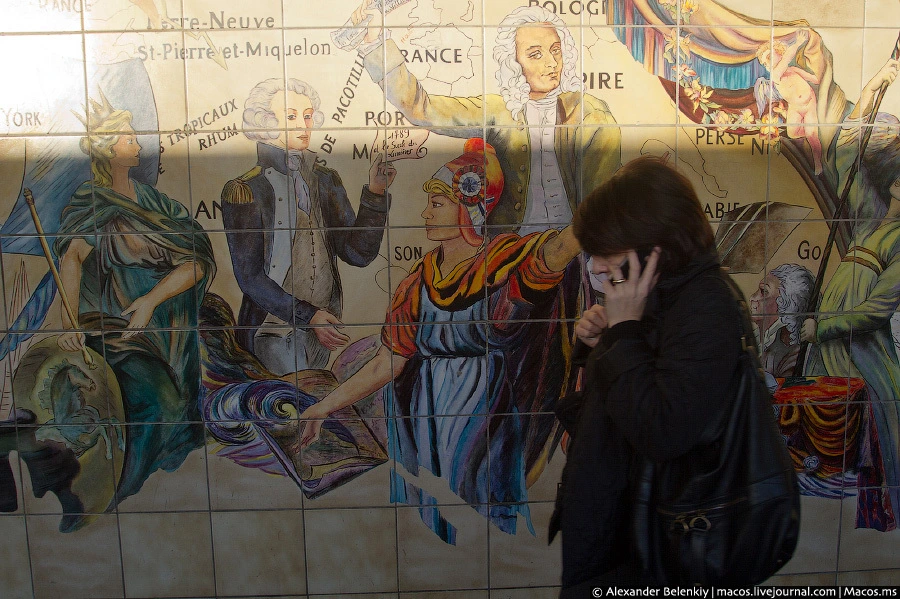
Cluny La Sorbonne station was recently restored.
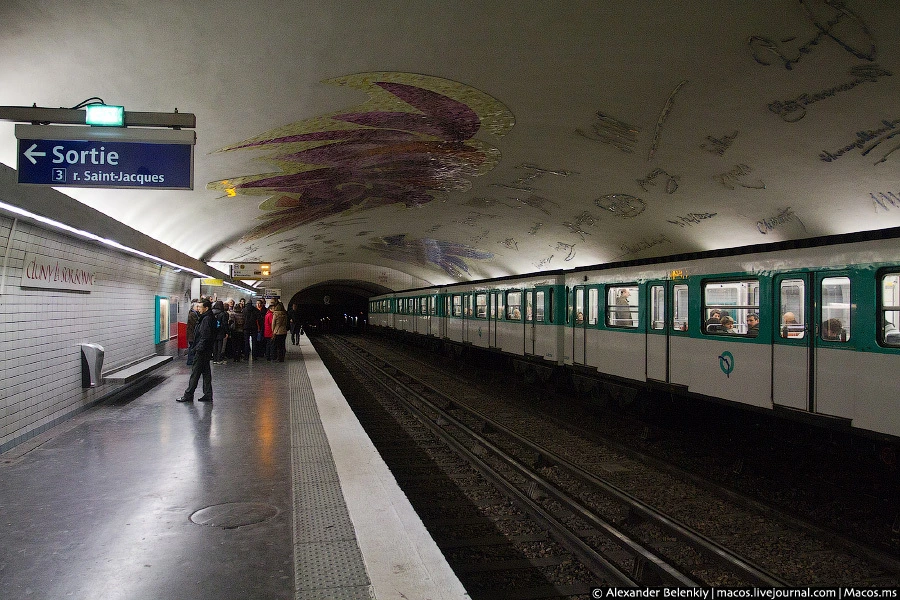
On its ceiling "appeared" autographs of great men of France - St. Louis on to Charles de Gaulle.
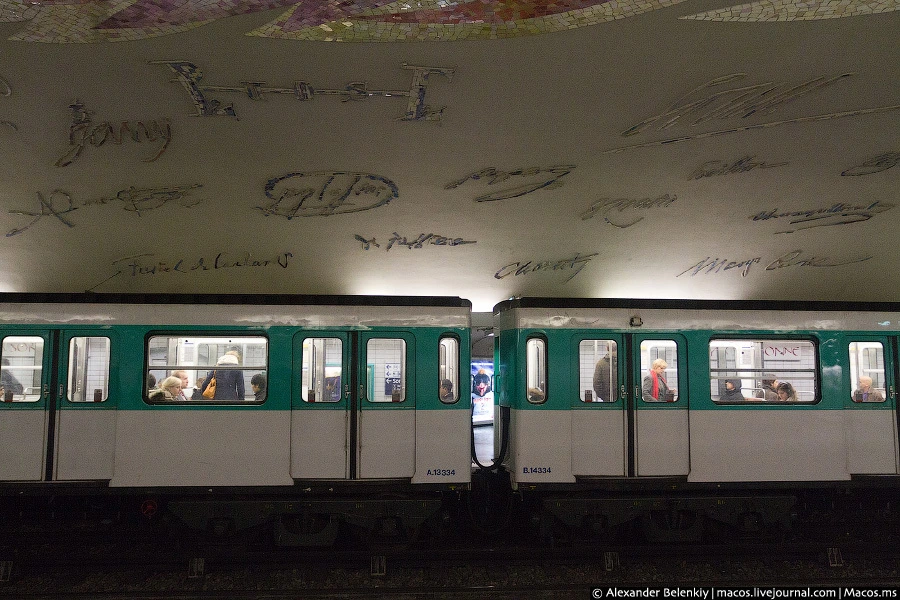
Pont-Neuf, Pont Neuf. Here is a mint, so the station is decorated with French coins from different eras.
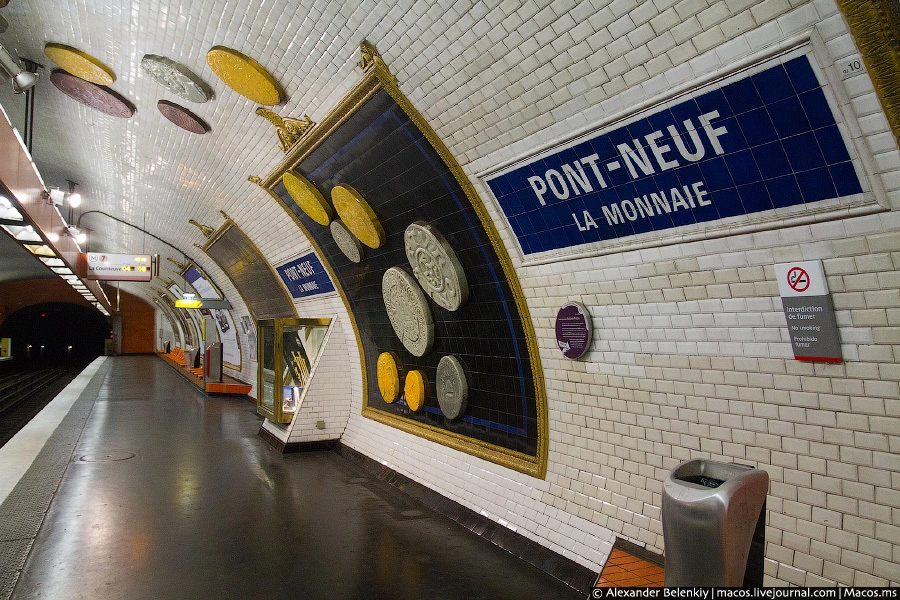
Condorde like an ordinary station, but each tile it shows some character.
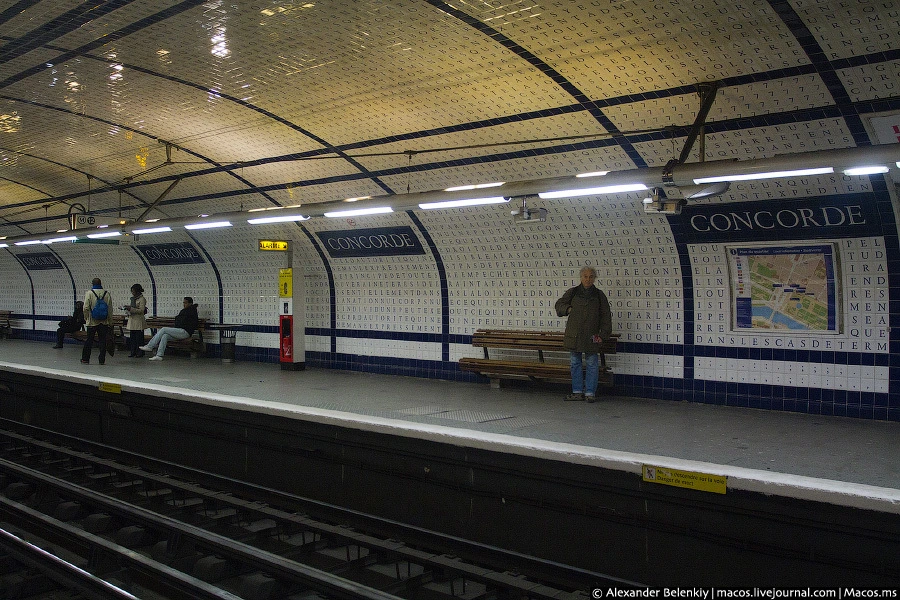
Intelligible words I did not succeed. Probably because the French do not know.

Interior details.
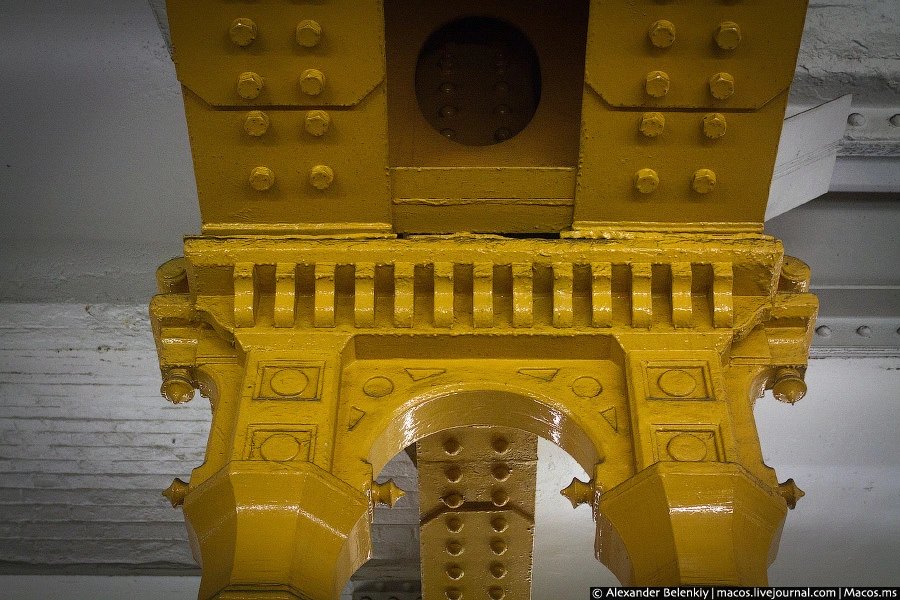
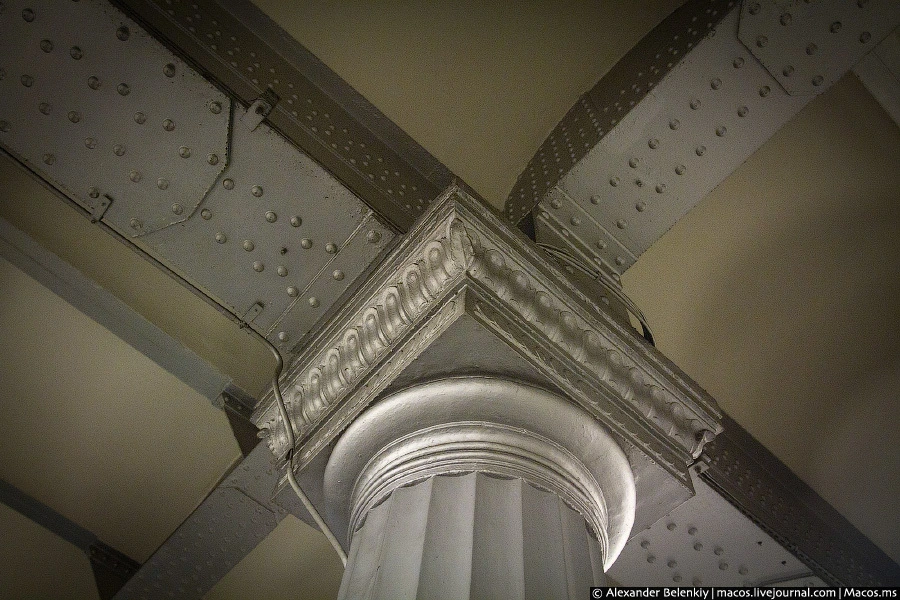
There are also all the abandoned station. The most interesting, and there are about a dozen, sent there during World War II, and since then not used. Imagine what wander along the platform, which does not work for almost seventy years? Alas, if earlier there was still possible to get, now all the exits are closed, and trains at such stations, of course, do not stop. If I have ever been to Paris and be sure to write a letter to the management company and ask to show me these zabroshenki.
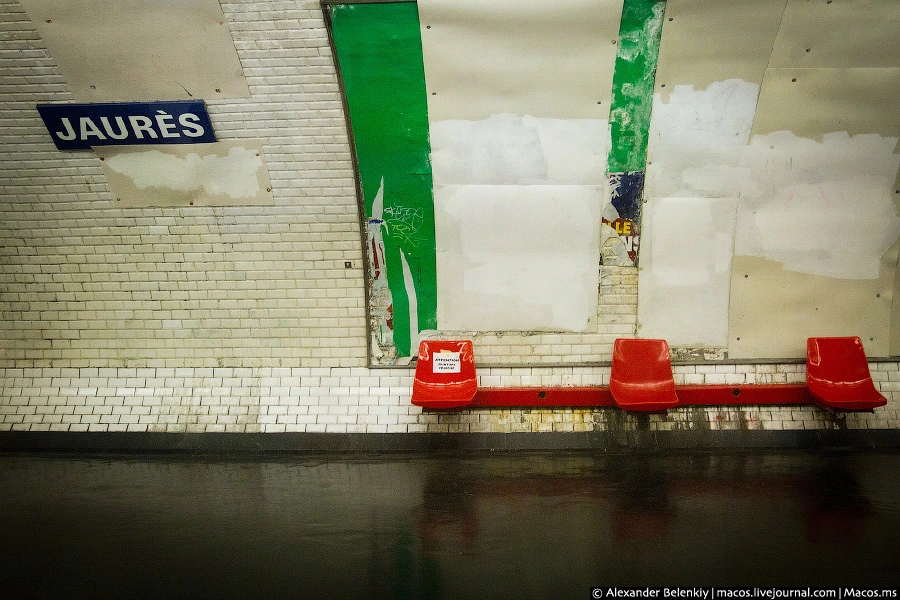
But Coy where I still got. In the deserted lobby of one of the stations. The street is not to go out, but wander through the old corridors crossing can. It is surprising that it employs light, although the entrance is not used 30-40 years
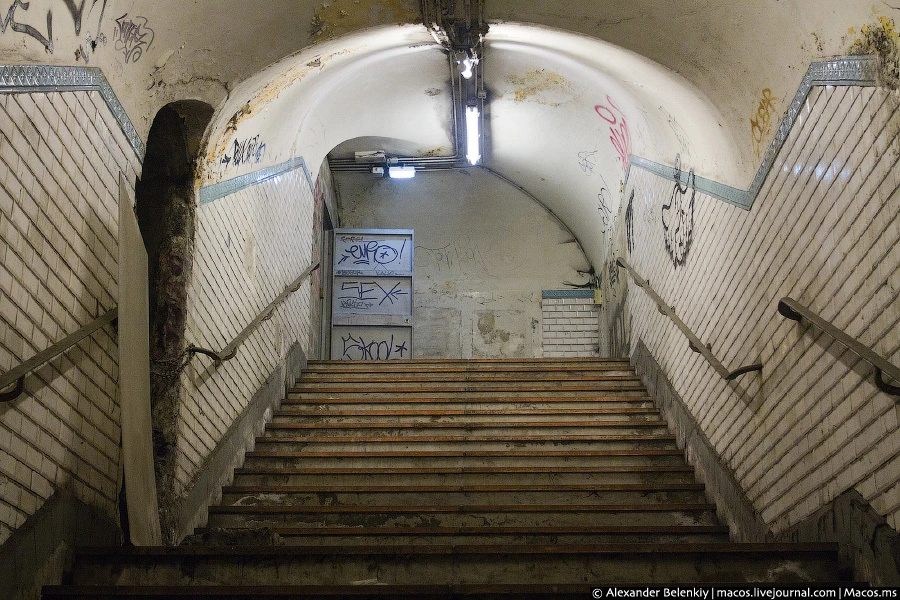
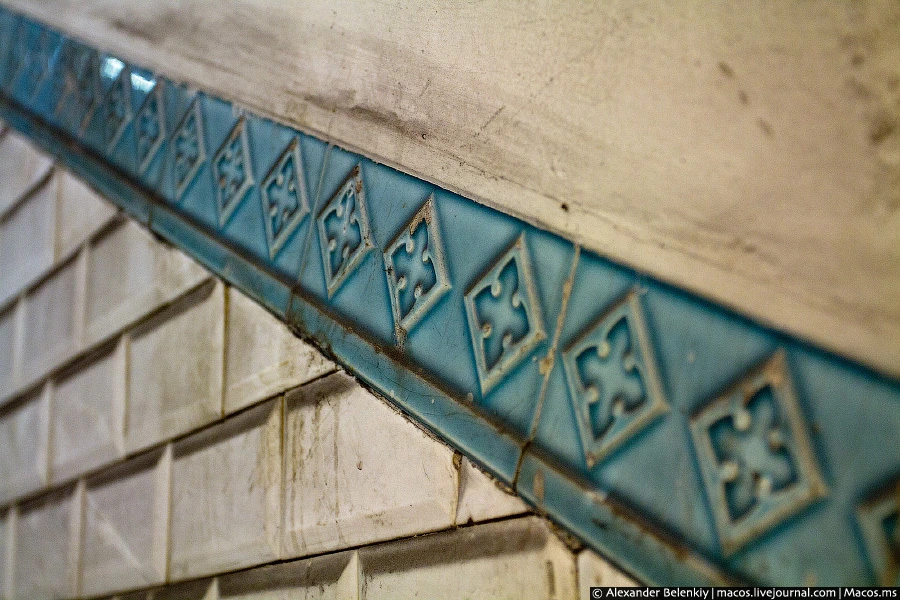
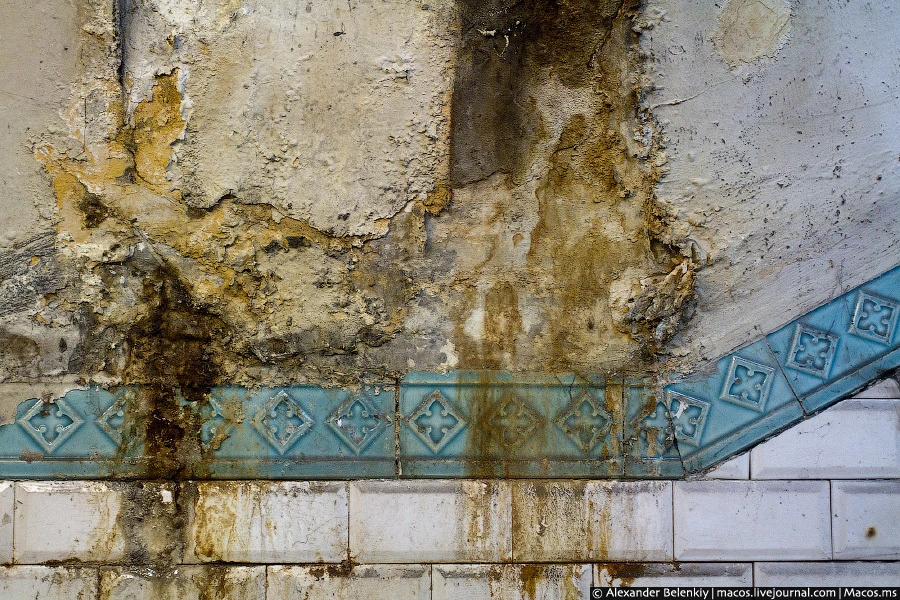
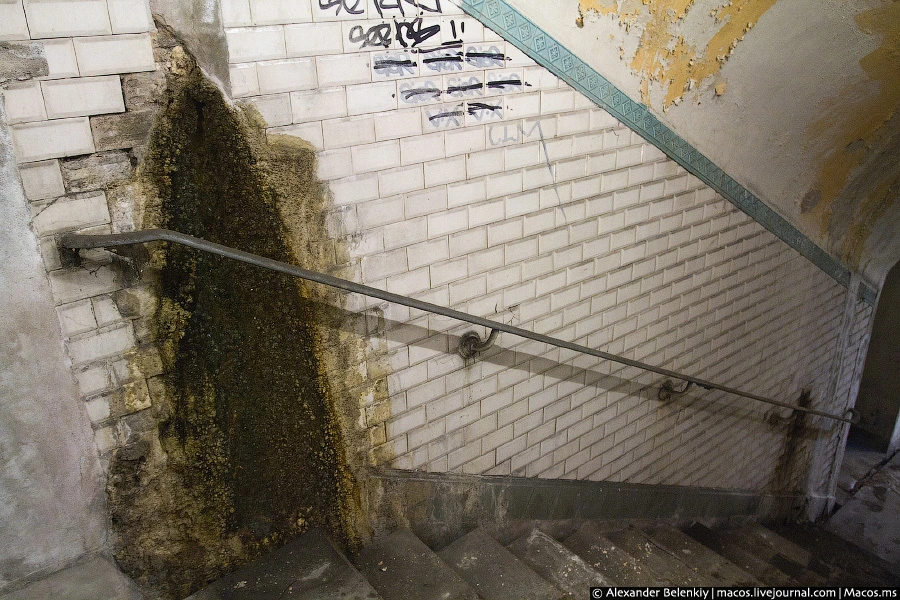
Ventilation shaft. Street very close.
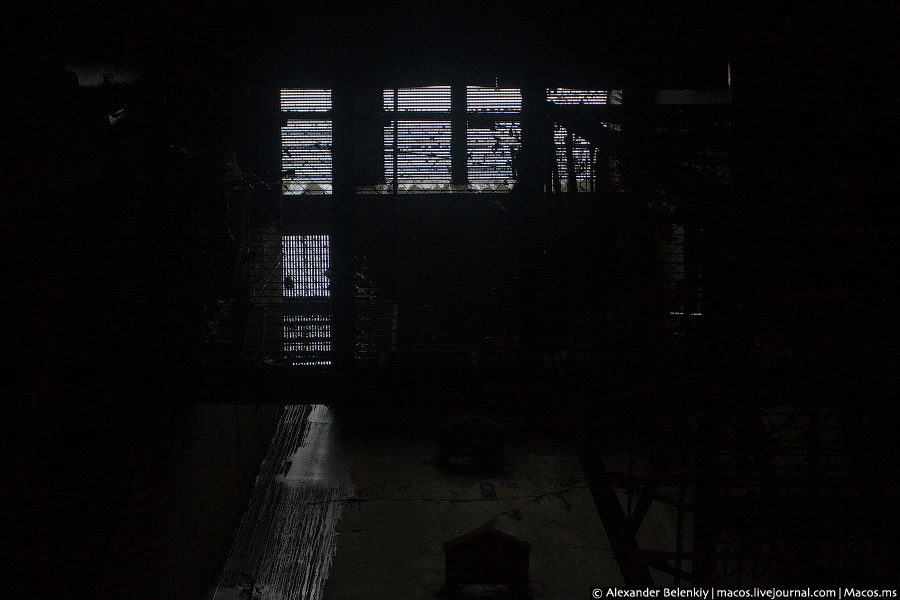
This Julien, a great lover and connoisseur of the Paris metro. Once every two weeks, on the weekends, he arranges excursions. Listen to him do not come to foreigners, as I thought initially, and the Parisians. Metro - the object of legends and stories, so local is also interesting. Previously, Julien and colleagues from the club metrolyubiteley arranged tours at night, rolled urban tourist train thirties, which he restored himself with friends. In particular, they did stop at the long-abandoned stations. Then something happened, they quarreled with the management of the transport company, tours are held only during the day and only at existing stations. For the opportunity to get into the indoor lobby just thank Julien.
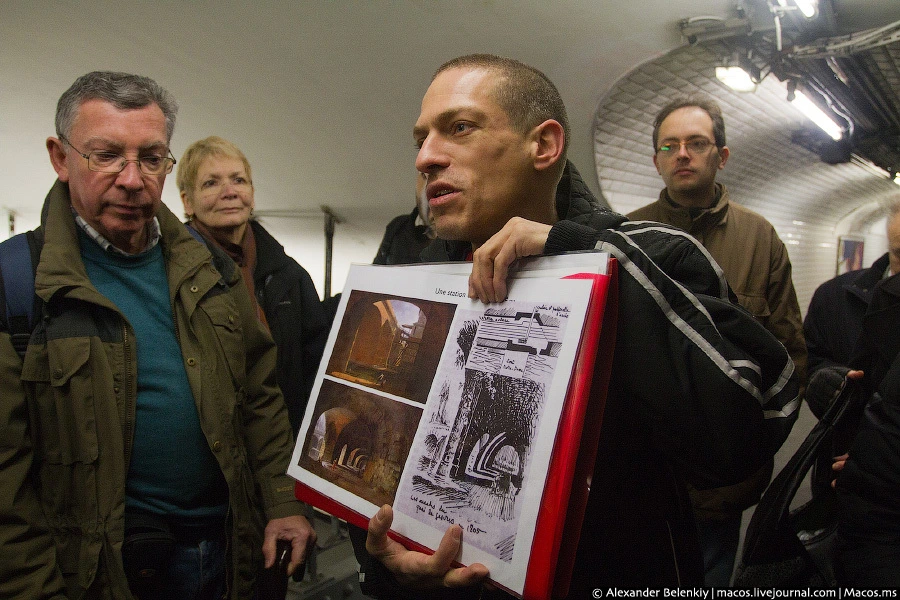
It is the oldest subway tunnel, it is more than a hundred years. Just his image shows a guide in the previous photo. Previously, there were wine cellars of Louis XIV.
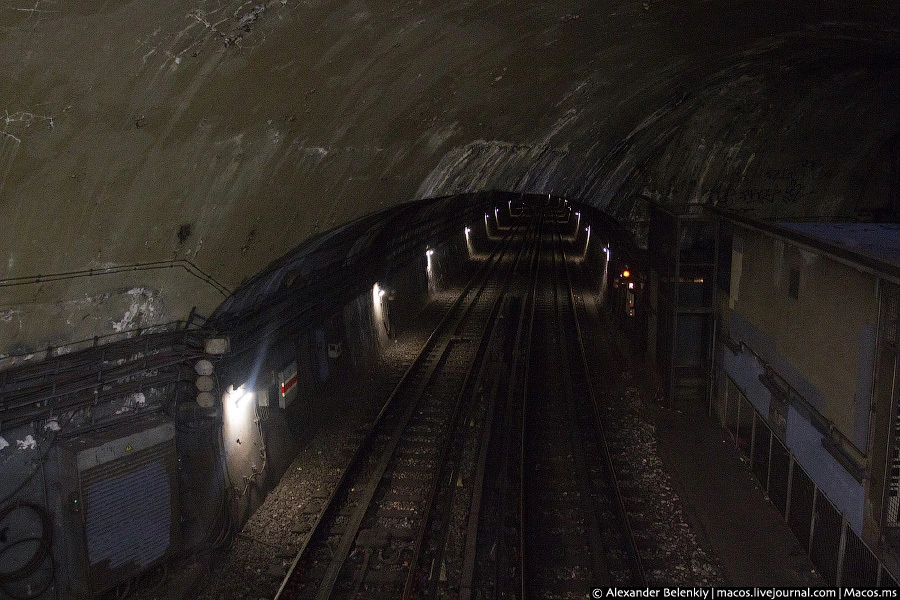
Julien has shown a lot of interesting plants. Unfortunately, he could not just for me all the time to speak in English, it would be wrong in relation to the twenty Frenchmen from the group. So while he was telling information, I wandered through the station, and when we got on the train, he briefly repeated in English, even for me.
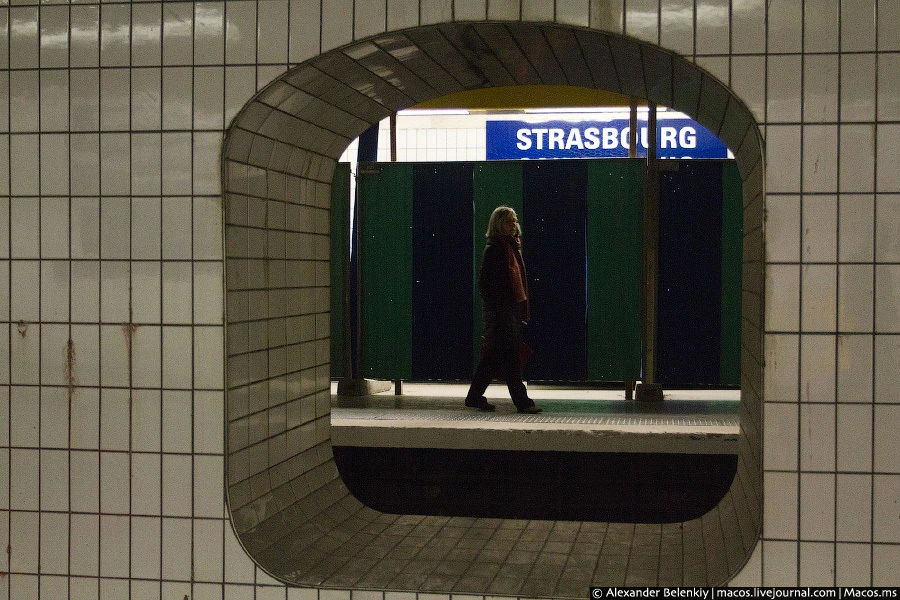
Guess what is this thing? Well, what do you think? And why is it necessary?
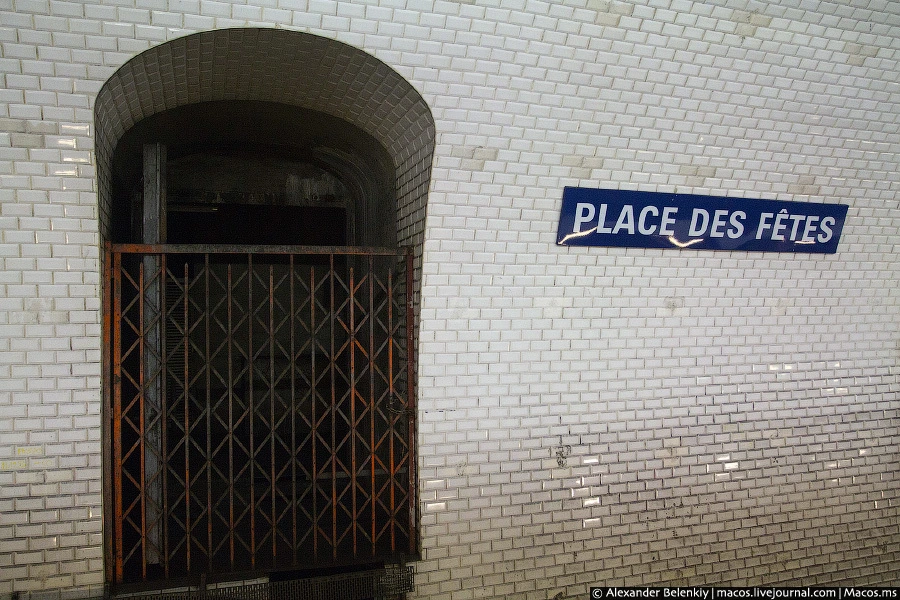
After the tour, the group came to the headquarters metrolyubiteley. There once was also a station, it is now closed and converted into offices. But remained one of the walls, with advertising forties.
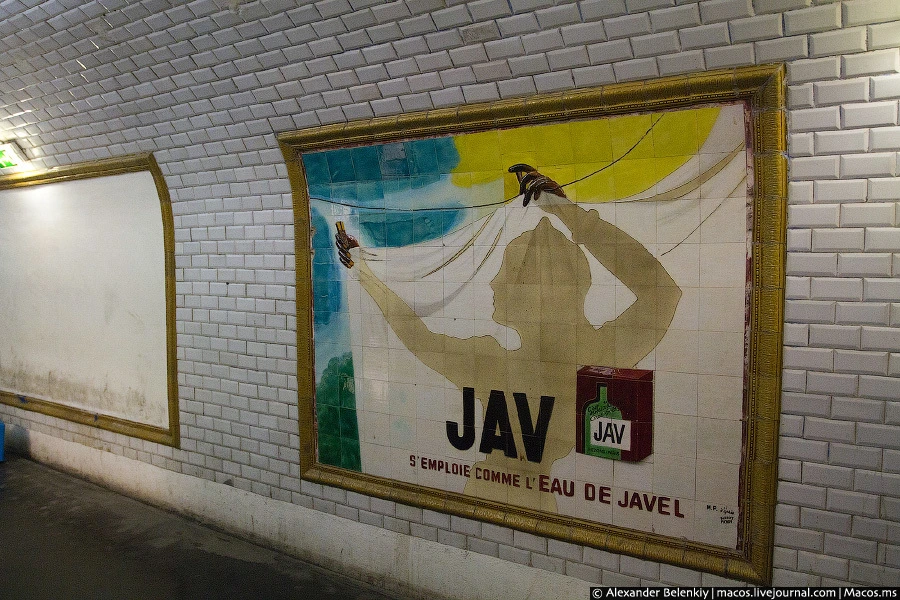
Tourists gladly buy himself some souvenirs. And I did not want to fool. Now I regret.
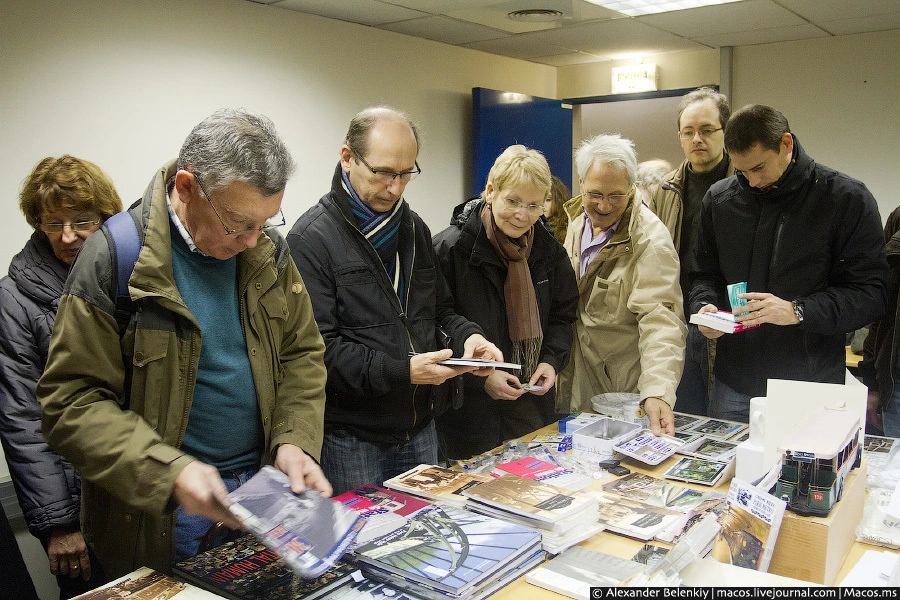
Magnets with the name of the station.
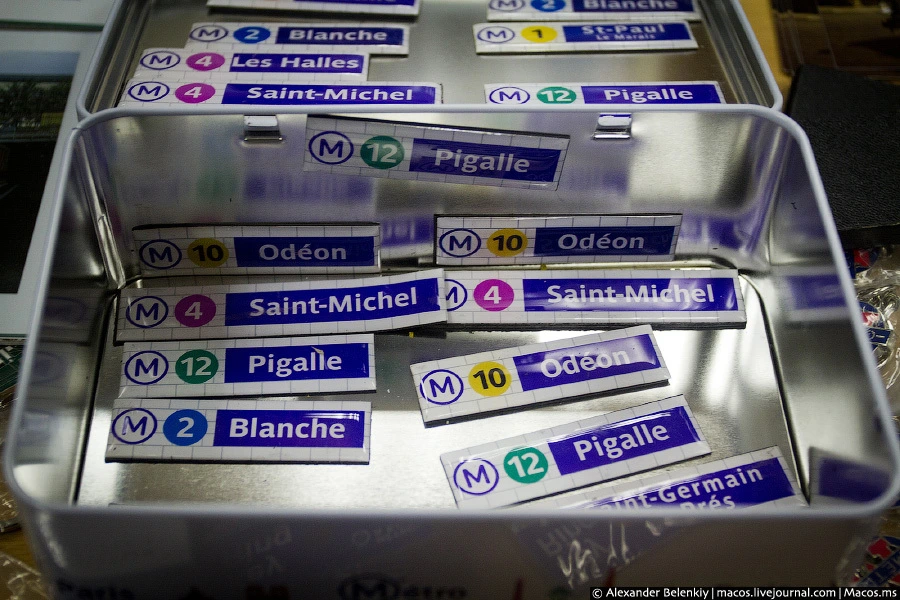
Any photos.
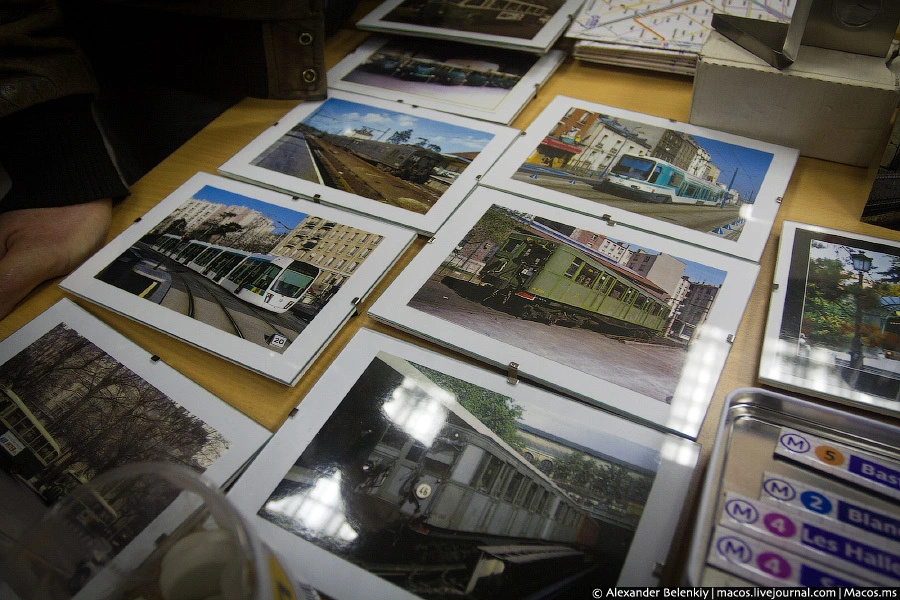
Charms, erasers, plates. And attention, toilet water to the metro! Why, it's France, the world center of perfume!
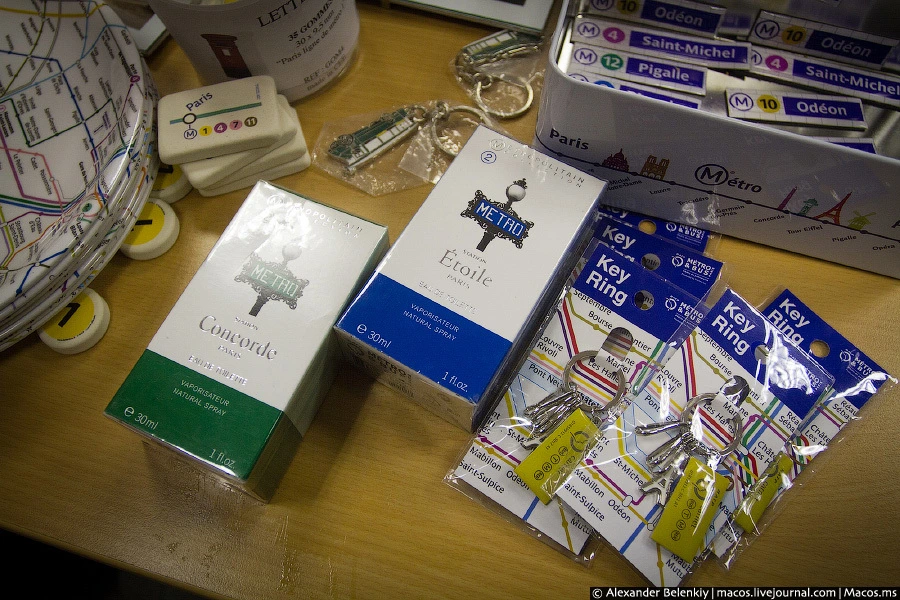
Entrance to the Paris Metro - a classic. There is nothing to add.
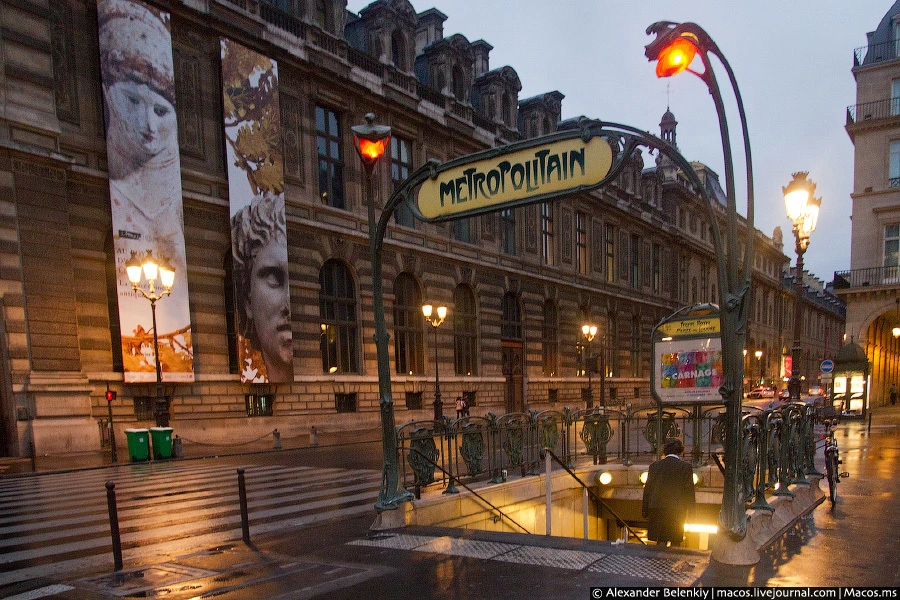
All of them are very diverse, although made approximately in the same style.
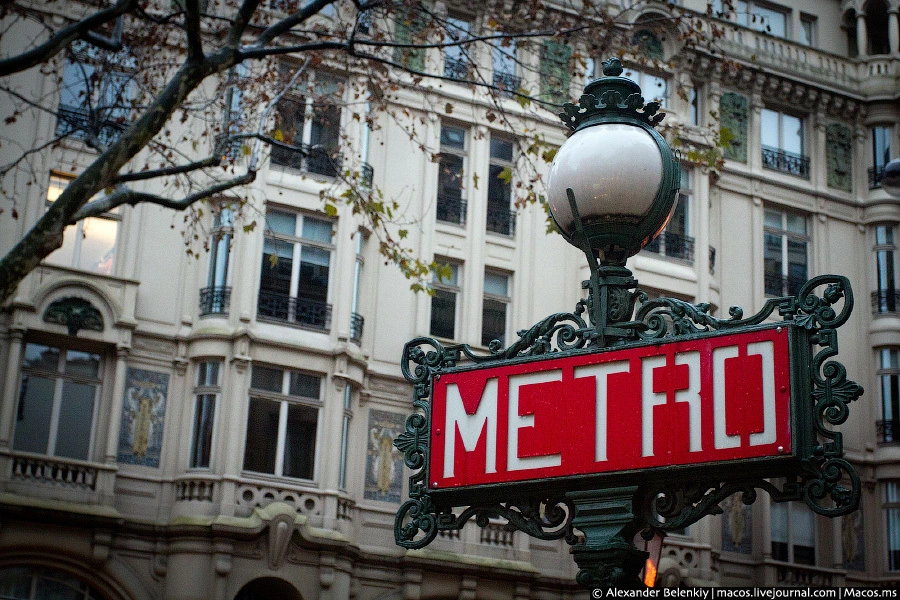
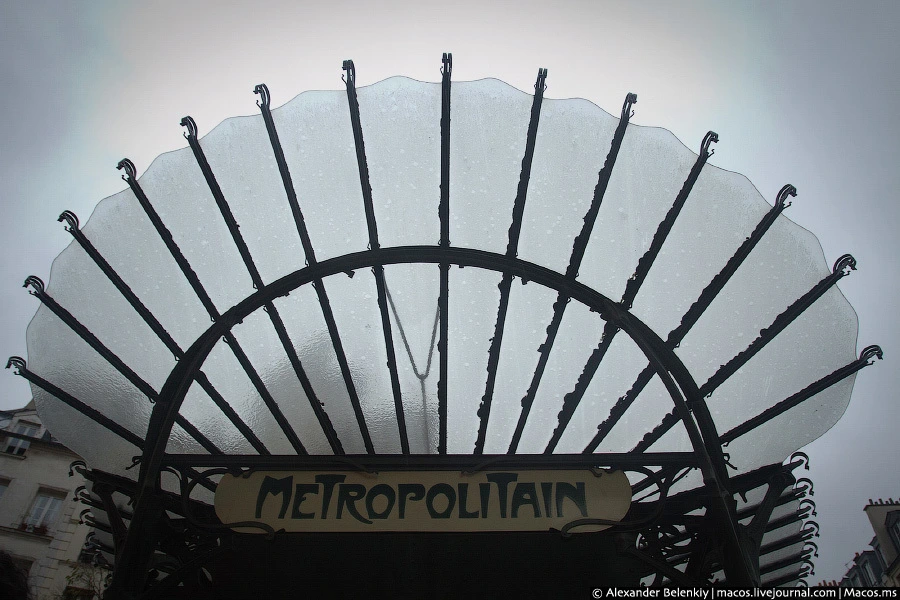
Exception - new stations. There's just a yellow letter M.
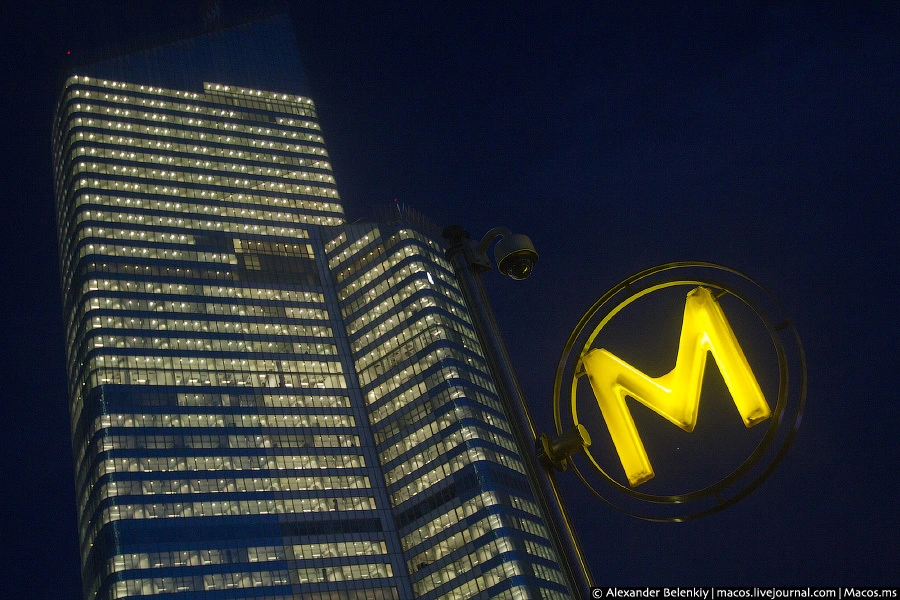
But the transitions between the lines of boring and monotonous.
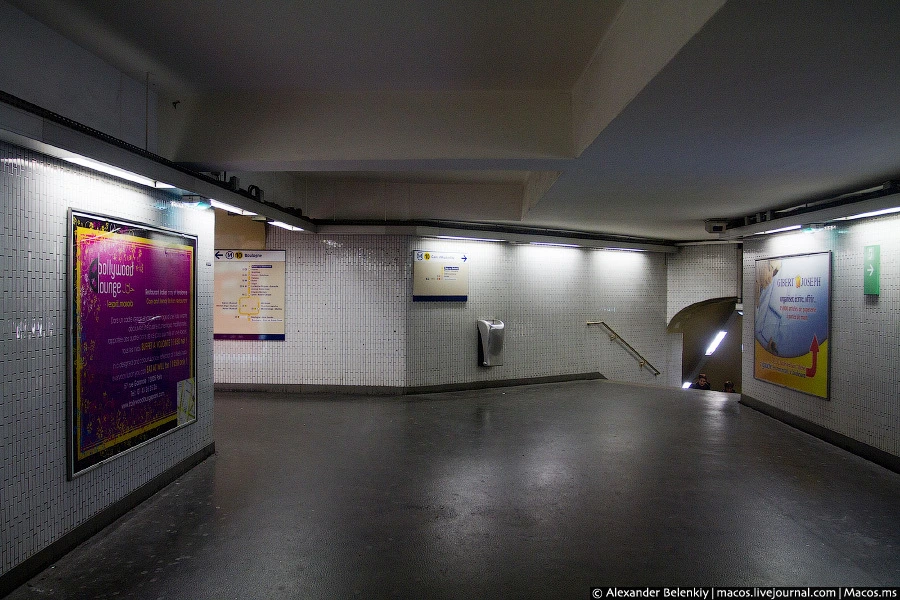
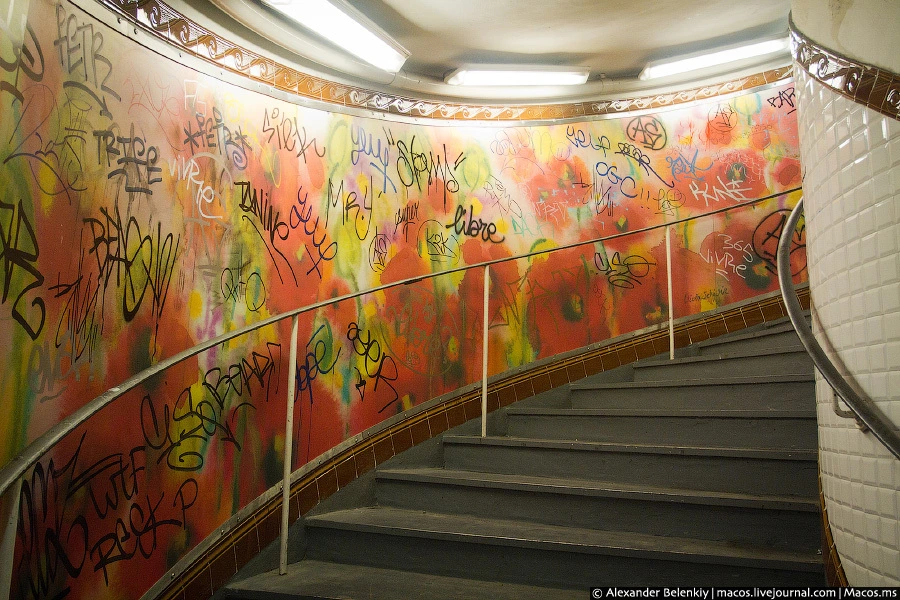
All of them are made of this white tile "brick". But why transitions, this whole underground tile lined!
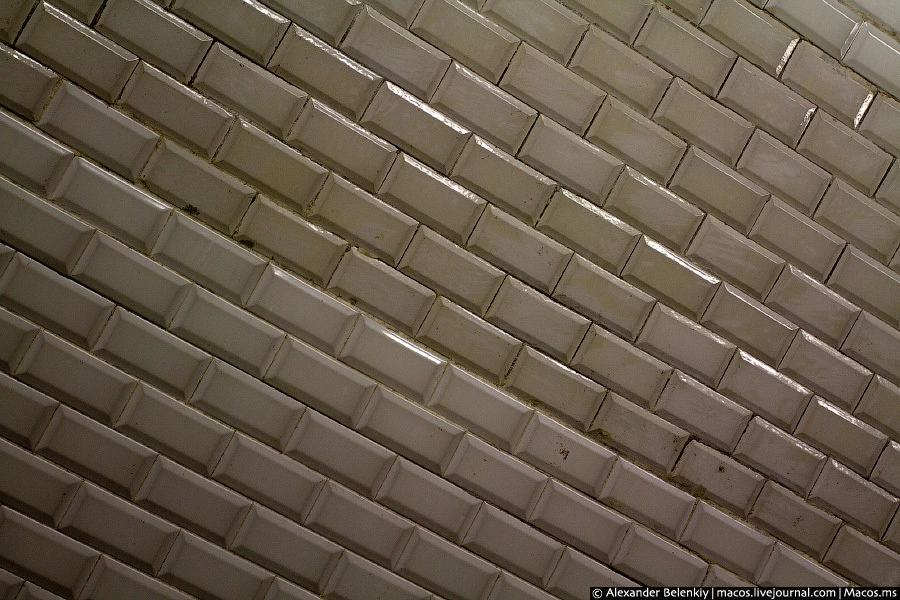
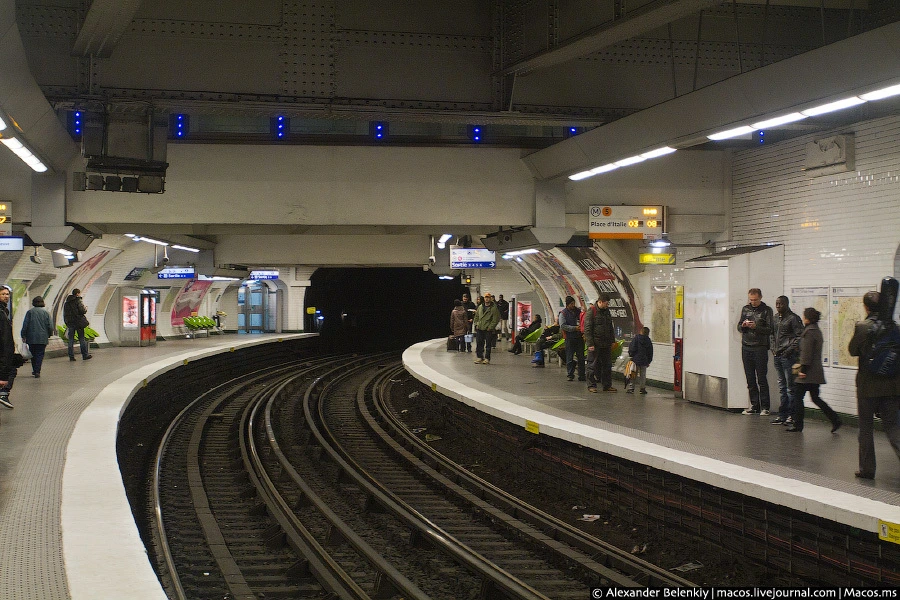
Remember Moscow station "China Town"? More precisely, two stations located nearby, for stenochkoy. In one way the train goes by a red thread, on the other - the purple. In Paris, too, such a station is, even the same color scheme. Is that stenochki not.
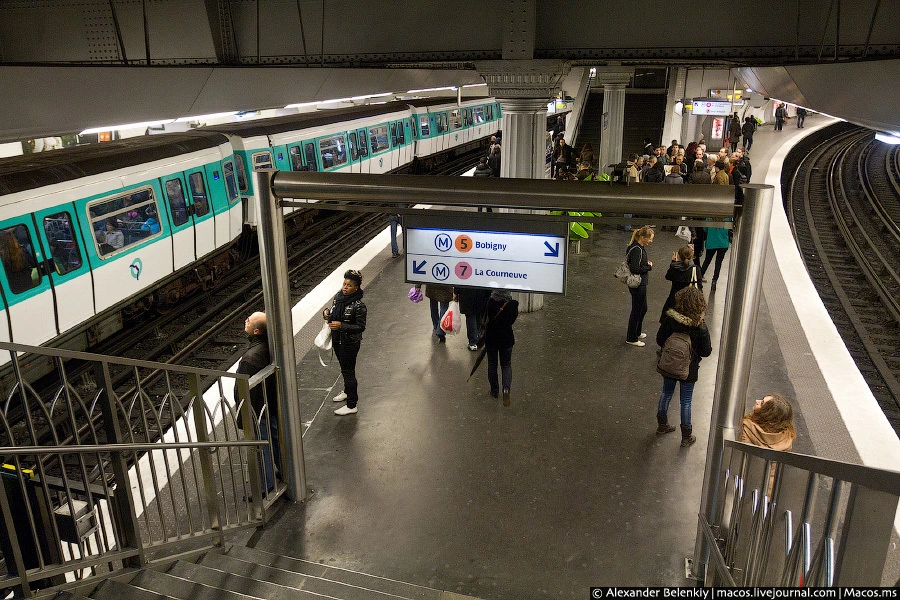
There are trёhputnye as Polezhaevskaya.
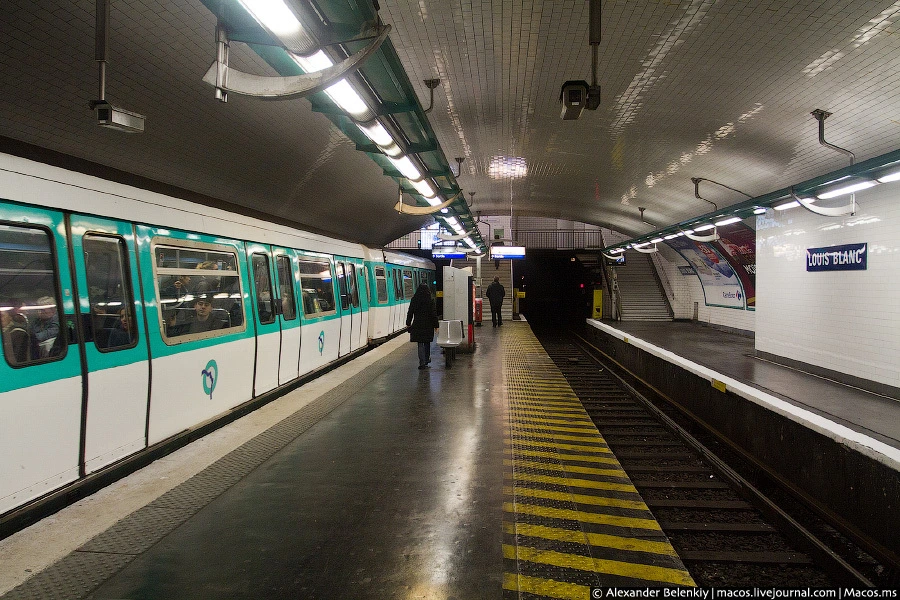
The Paris metro has two stations, which are connected with Russia - Stalingrad and Sevastopol.
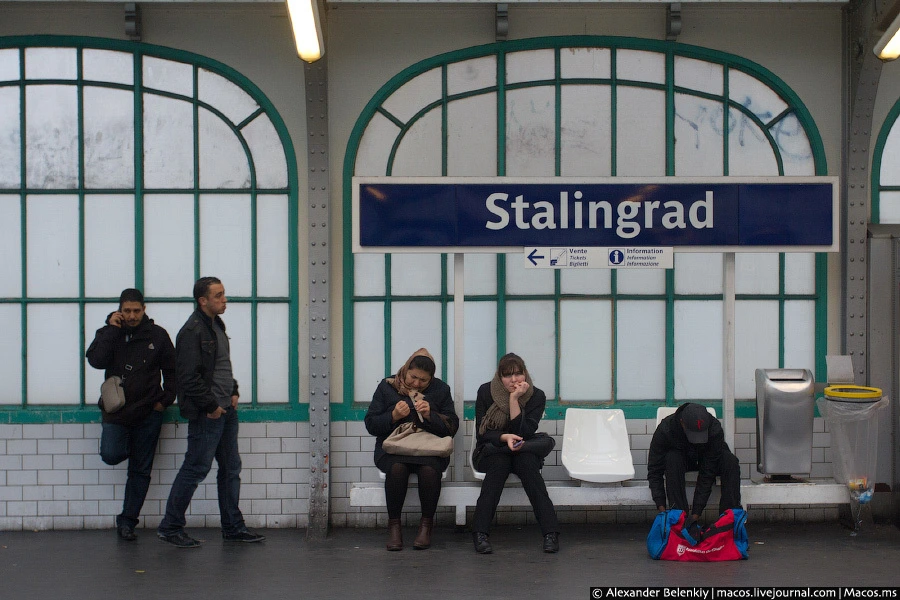
Parisian friends warned me to be careful on the subway, there is always wielded by pickpockets. The same warning on speakerphone (in French, so do not understand), and on the monitors, already duplicated in different languages. Fortunately, there were, and I hung a small backpack lock code.
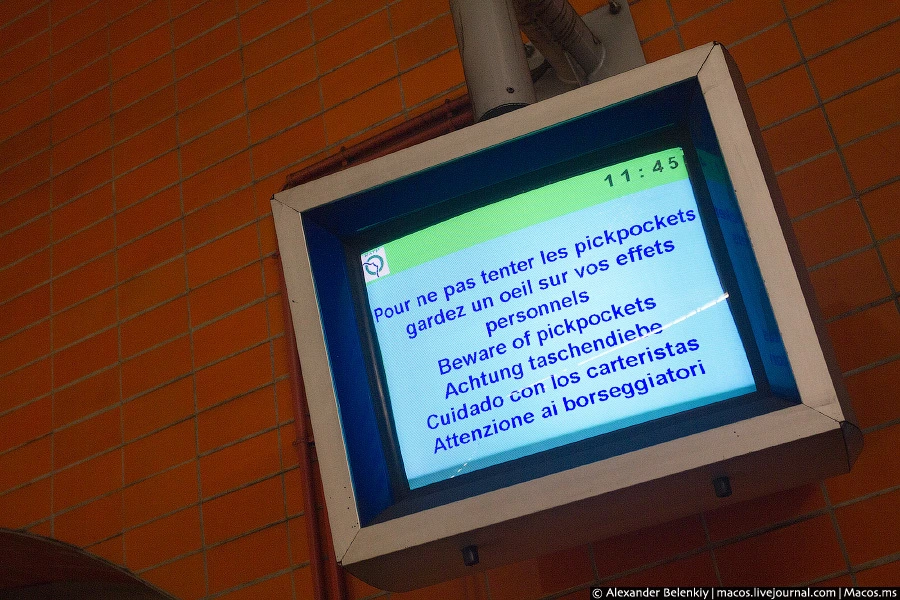
However, the main problem of the subway - is not pickpockets.
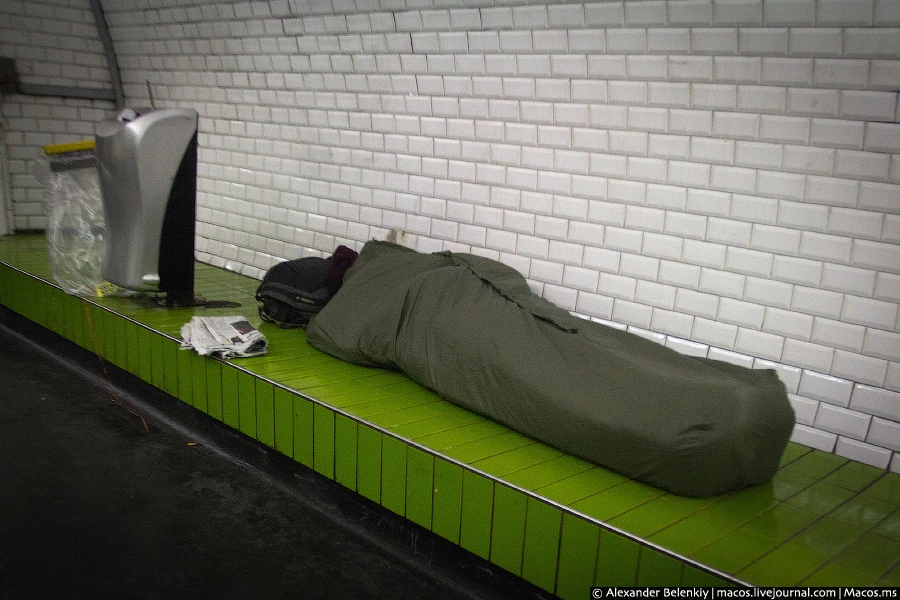
In the morning sleeping homeless. A lot of them. Dozens at each station!
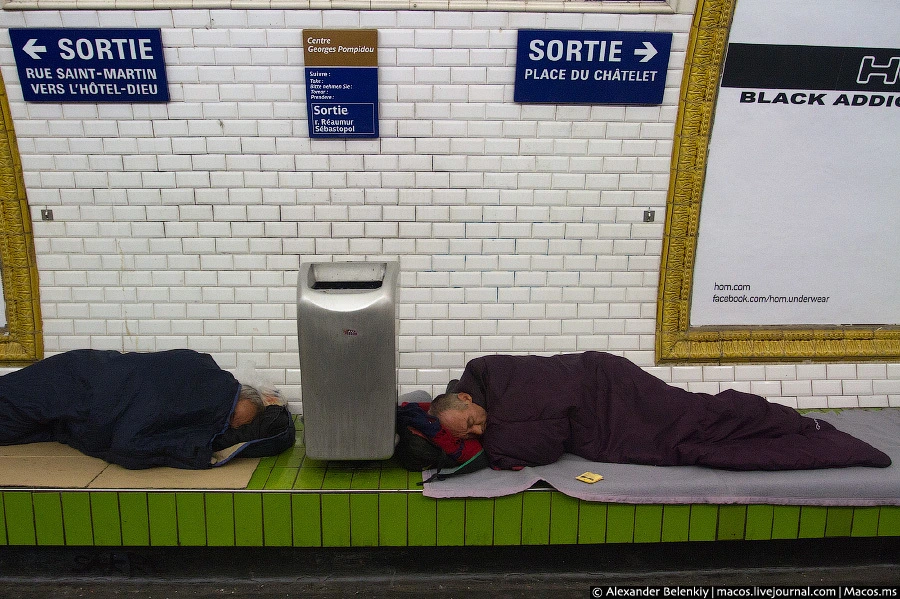
To their credit, I can say that almost all of them are sleeping culturally, in sleeping bags. In order not to annoy passengers.
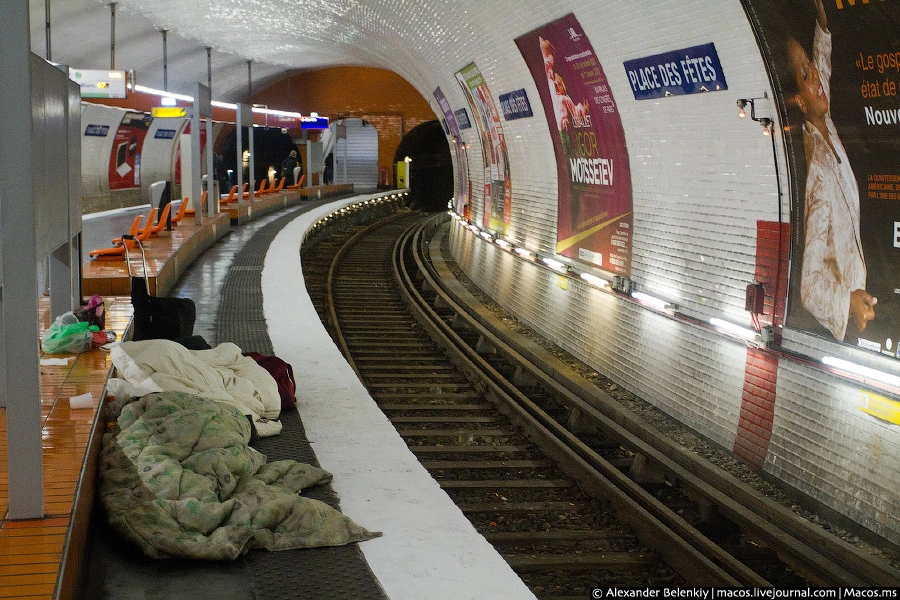
Surprisingly, the police did not touch them. Maybe they have some kind of tacit agreement, because somewhere to nine in the morning all the homeless out of the subway disappear.
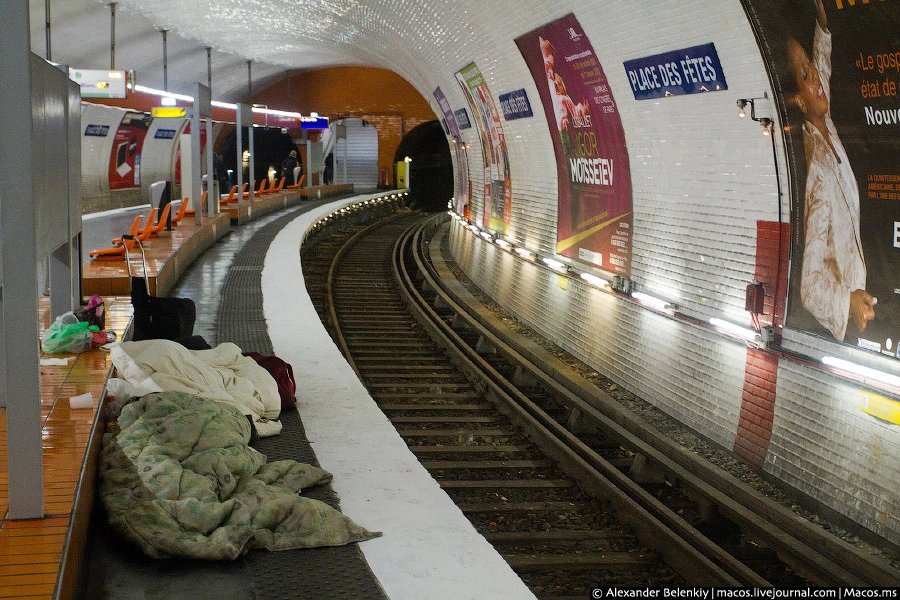
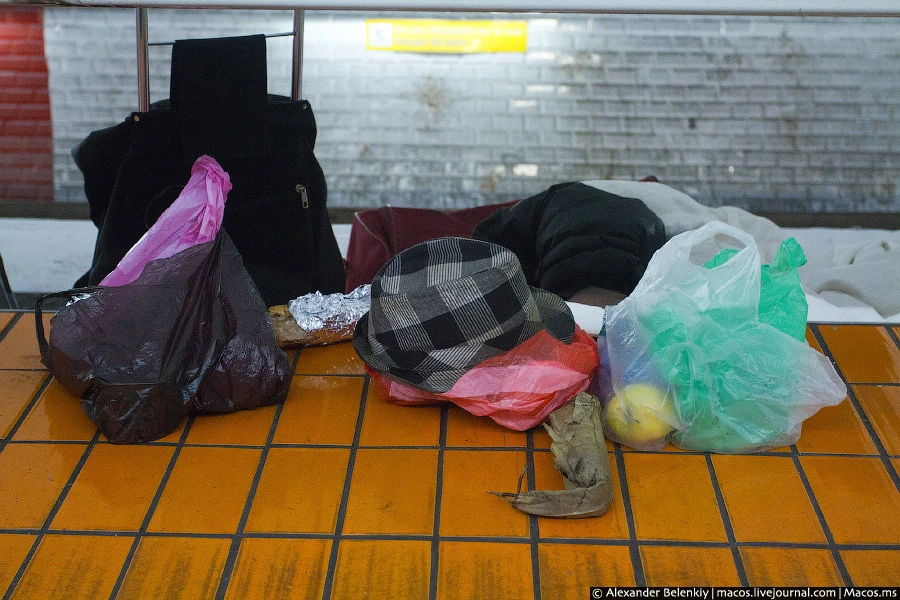
Still, despite all the cons, the subway - it's part of Paris. Why, it's beautiful, romanteskogo, cozy Paris. In addition, as transportation is very convenient subway.
